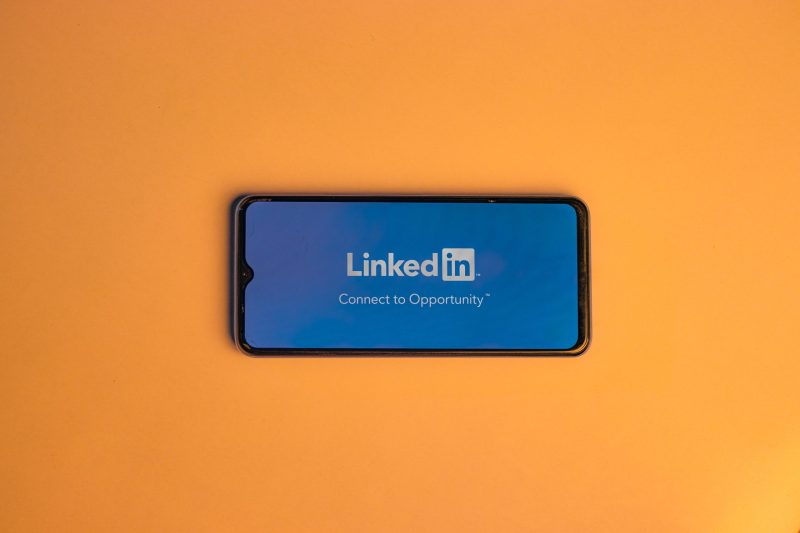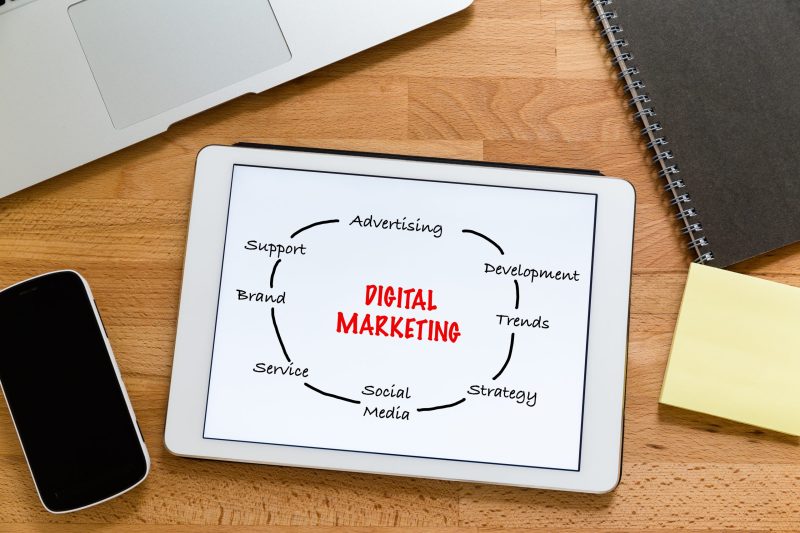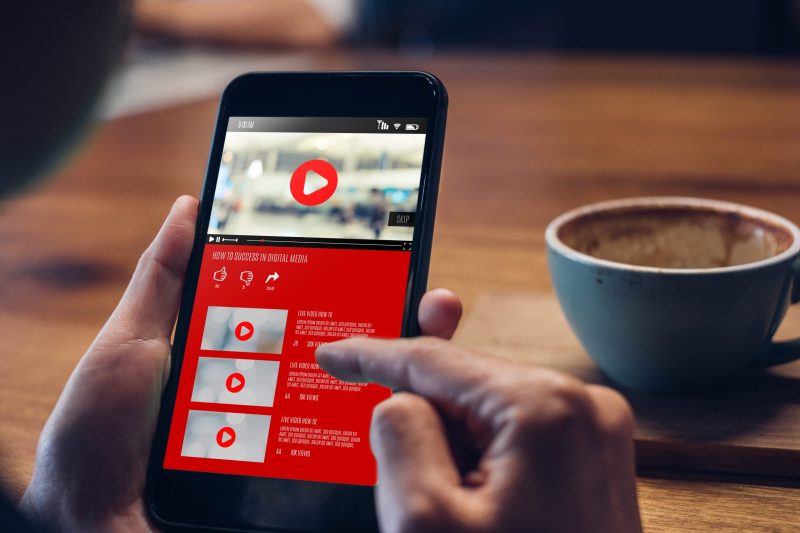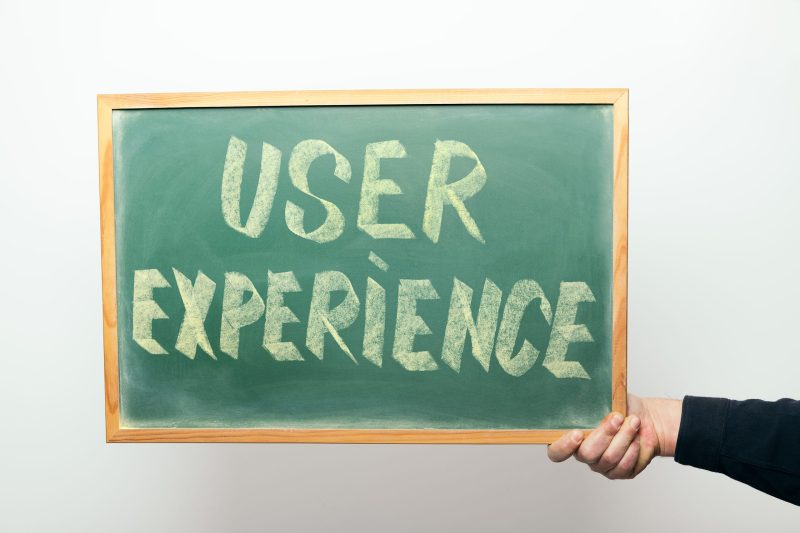☰
- Home
-
Solutions
Transformative solutions we deliver
- GoCRM
- Integrations
- About Us
- Contact Us
- Let's Connect
- Home
- Solutions
- GoCRM
- Integrations
- About Us
- Contact Us

How It Will Benefit You
My imagination was the only virtual reality I had access to as a child. My main sources of escape were cable television, movies, and early video game systems like Nintendo (can I even mention books?). Given the ridiculously low-resolution images our generation spent hours staring at, we are fortunate to still have our vision. But now that things have changed, stunning high-definition virtual reality (VR) and augmented reality (AR) are slowly making their way into the mainstream.
A Video Star Was Killed by VR
Let’s take a technological step back before talking about what the auto industry is doing with VR and AR now that they have advanced beyond the Star Trek holodeck. It’s crucial to first comprehend how conventional video is used in car sales. A recent survey found that 88% of customers who watched web videos before visiting a dealership were prepared to make their purchase.
That is power, my friends. According to statistics, almost everyone who completes their online video assignment has already made up their mind before coming to your lot.
In contrast, 78% of consumers knew what they wanted in the absence of video. When you consider the millions of shoppers that view videos, that 10% difference adds up. Customers now expect you to supply YouTube content and dealership inventory films since they have been incorporated into the buying process. Then, preferably with the actual, in-stock vehicle, they watch walkaround videos. Most people have their minds almost made up about the car they want to buy by this point. Where they’ll purchase is still up in the air as more and more prospective buyers utilize local Google searches, read reviews and star ratings, and use social media to whittle down their options. But that is a different tale.
Given the persuasiveness of video, it is understandable why automakers are rushing to showcase their wares in virtual and augmented reality. Imagine a totally immersive, 3D walkaround where clients may use their fingers to instantly modify a car’s paint color or trim level if a smartphone video proves attractive. Without leaving your dealership, they experiment with a pair of showy rims and perhaps check out the inside in leather rather than fabric.
Catching Fire VR
How popular is the VR/AR industry? The industry, which is currently valued at $1 billion, is anticipated to grow to $120 billion. Cardboard, Google’s low-cost smartphone VR device, has sold over 10 million units and more than 150 million apps. Sales of reasonably priced devices like the Oculus Go, which fill the gap between pricey VR headgear and cheap Cardboard, are outpacing forecasts. Nearly a million PlayStation VR units have been sold, according to Sony. The market estimates, however, wouldn’t be as optimistic if these technologies were exclusively intended for home arcades. The vehicle dealership is but one illustration of VR’s promising commercial future.
The use of virtual and augmented reality by automakers
Virtual technologies provide an efficient, reasonably priced approach to displaying buyers a variety of car options without having to have them in stock. Before they even loosen a bolt, custom businesses can display customers’ customized vehicles on the service side.
The Audi VR Experience was just released by Audi, and it’s meant to entice customers back into showrooms. No matter how many actual automobiles are on the lot, customers can choose from millions of spec combinations, and the application contains the whole lineup of the automaker.
Using Snapchat’s augmented experimental lens, BMW engaged fans all over the world to launch its X2 crossover. Users may alter the vehicle’s colors and view it from any angle using the 3D experience. Users could enter the EcoSport and see the inside of it during Ford Canada’s augmented reality walkaround. The Microsoft HoloLens headset-powered HondaLens AR provided consumers with information on noteworthy features as they examined a real-world Accord at recent auto shows.
Despite giving businesses new selling tools, new display technology also enables them to dazzle customers after the sale. Great marketers make every effort to ensure that customers are aware of how to operate their new automobiles because they understand that informed customers are happy customers. Innovative manufacturers like BMW and Hyundai offer augmented reality (AR) user handbook apps for mobile devices that overlay feature information over the area of the car the user is looking at. Since struggling to read distant signs can distract drivers and result in accidents, Chrysler is reportedly looking into augmented reality windshield overlays that display virtual street signs.
VR/AR Construction and Testing of Autonomous Vehicles
Self-driving cars are now a reality thanks to virtual technologies that have already surpassed the limitations of conventional vehicles.
As reported by AppReal:
“The University of Michigan has an intriguing take on augmented reality and driverless cars.” Researchers at their MCity lab employ augmented reality to make connected car testing simpler, quicker, and safer.
When it comes to self-driving cars, safety is the top concern for the majority of corporations and governments. Because the technology is still in its infancy, many consumers are reluctant to entrust a machine with their lives.
Testing is therefore crucial. It’s also impractical to test for every scenario that might arise. How can an engineer create severe traffic gridlock at will? “Or an unanticipated jogger, or a crossing for wildlife, or a drunk driver weaving through traffic?”
Vehicles travel the test track while avoiding both real-world and simulated traffic. From the viewpoint of the car, AR data is just as genuine as the feedback about a real brick wall that its external sensors provide. Developers can create scenarios that they could never manage in real life using this testing technique. As a series of ones and zeroes, multi-car pileups are much safer and less expensive.
Moreover, they are simpler to reconstruct.
Additionally, manufacturers are using VR and AR to help with vehicle design and production. Companies can comprehend the effects of specification or process modifications on overall vehicle feel and usability as well as on assembly line procedures by using immersive, three-dimensional graphics.
VR/AR driving instruction
Teenagers can find tools for safe driving at TeenDrive365.com, which was created through a collaboration between Toyota and Discovery Education. The program developed an immersive experience and traveled with its show when it sought to emphasize the risks of driving while distracted.
Brightline Interactive claims:
Users controlled the 3D environment and dealt with typical audio and visual distractions like passengers, incoming text messages, and outside hazards while seated inside a real Toyota car using the steering wheel and pedals, which were integrated into the experience with custom sensors.
One day, training for drivers may likewise take place in the security of VR, with AR providing assistance while driving. (Would this slow down student drivers who rush-hour rush at 15 mph?)
The Truth for Dealerships and Service Facilities
Applications and VR/AR headsets are improving and becoming more affordable. However, the resources to produce truly breathtaking customer experiences are currently only available to manufacturers. Cost and image fidelity will probably prevent widespread use for a few more years. However, reasonably priced, high-quality VR headsets like the Oculus Go make it simple for dealerships to provide virtual walkarounds or OEM-provided content, either at the dealership or the customer’s home.
Follow us for more information on VR and AR and how they can improve your sales now and in the future.

A sound understanding of your target audience, strategy, and hard work is essential for a successful social media campaign. Social media engagement and audience growth are excellent tools for business success and development. At SimpSocial, we have the inside information you need to advance your social media marketing initiatives.
Attempt Not to Always Sell
Do you frequently promote your goods in postings on social media? Do all posts have a sales focus? You’ll need to change things up if your postings are overly focused on the bottom line if you want to succeed. Nobody enjoys being sold to every time they view your page or see one of your posts in their news feed. Continuously selling can eventually grow tiresome and possibly drive some customers away from your brand. Give your fans a reason to visit your profile pages instead by providing discounts, rewards, and even a chance to win!
Understanding the Real Interests of Your Audience
It’s also crucial to know what your audience finds enjoyable. Consider your company and the aspects that fascinate your customers. There are effective techniques to organically and subtly advertise your goods. Keep track of the posts that receive interaction and those that don’t. Does your target market enjoy giving feedback, expressing ideas, and learning intriguing things about your good or service? Understanding these social media trends will help you create posts that get more attention. Avoid engagement bait as well, as we discussed in a prior blog post.
Be dependable
Is the number of posts you make throughout the month inconsistent? Consistency is one of the key components of effective social media posting. There must be a regular posting schedule if you want to keep readers interested and returning every day. This applies to websites like Facebook, TikTok, and others. Consider the times of day when your audience is most active and post during these periods.
Is it too time-consuming to plan, manage, and carry out an effective social media campaign? Thankfully, SimpSocial has a group of professionals prepared to give your company the attention it needs. Register for your free demo now to learn how we may benefit your company.
 LinkedIn’s top-notch platform links business owners, skilled professionals, and up-and-coming talent with other professionals all over the world and has over 740 million individuals and over 55 million firms registered. LinkedIn is used by people to exchange content related to their industry, discover new jobs, and update others about their professional choices. Through LinkedIn, over 35.5 million people have found employment.
Your company can naturally publish job openings on LinkedIn. To get the ideal people you need, we advise running a sponsored job posting if your company is seeking quality applicants for a certain position. Businesses typically receive three times as many quality applicants when they advertise their job openings.
LinkedIn’s targeting capabilities
Unlike other social media networks, LinkedIn enables you to target specific populations, such as:
Members can be found depending on the companies they work for.
Demographics
Degrees and study fields in education
Job Experience: Titles, Capabilities, and Years
Interest and Traits: Member Groups, Interests, and Traits
Jobs Sponsored on LinkedIn
If you need to fill many job roles and want to take advantage of the advanced targeting possibilities we mentioned above, we advise using this ad type. This ad format aids in promoting your job opportunities at the top of LinkedIn’s tailored job suggestions and the “Jobs You May Be Interested In” tab on desktop and mobile. Your advertisement will be sent to your target audience via LinkedIn messaging and will appear in their news feed under the jobs category. We can choose your target demographic, area targeting, and ad schedule by selecting sponsored recruiting advertising on LinkedIn.
Dynamic Ad Example: To provide a personalized experience, this will make use of the user’s profile name and image.
LinkedIn
Advertised Job Listings
Your company must spend at least $20 per day on a particular listing in order to run a promoted job listing. Only when your company needs to fill a specific employment role do we advise using this ad type? The only requirements for this type of advertisement are a description and any other information about the position. These job listings won’t show up on the newsfeed but will surface when a user searches for employment or goes to the jobs tab. For promoted job listings, LinkedIn doesn’t let you select advanced targeting choices; instead, it bases its decision on the keywords in the job description, the location of the vacancy, and previous user activity. The listing’s label will read “Promoted.” The job title and description are all we need to begin working on your upgraded job listing!
Where do I begin?
Google+ 2
To begin using LinkedIn, simply adhere to the easy instructions listed below:
Contact Experts in social media can be found here.
Make sure your company has a LinkedIn page.
Tell us about the position(s) you are hiring for!
We will suggest the ideal form of advertising for your company.
Run job postings on LinkedIn!
LinkedIn job postings are something SimpSocial has expertise with. Our crew is skilled at handling these ads and can assist you in finding excellent applicants for your company. LinkedIn opportunities are proudly provided to our clients by our team of Social Media specialists. To find out how to begin, get in touch with us. SimpSocial (888) 829-1110
LinkedIn’s top-notch platform links business owners, skilled professionals, and up-and-coming talent with other professionals all over the world and has over 740 million individuals and over 55 million firms registered. LinkedIn is used by people to exchange content related to their industry, discover new jobs, and update others about their professional choices. Through LinkedIn, over 35.5 million people have found employment.
Your company can naturally publish job openings on LinkedIn. To get the ideal people you need, we advise running a sponsored job posting if your company is seeking quality applicants for a certain position. Businesses typically receive three times as many quality applicants when they advertise their job openings.
LinkedIn’s targeting capabilities
Unlike other social media networks, LinkedIn enables you to target specific populations, such as:
Members can be found depending on the companies they work for.
Demographics
Degrees and study fields in education
Job Experience: Titles, Capabilities, and Years
Interest and Traits: Member Groups, Interests, and Traits
Jobs Sponsored on LinkedIn
If you need to fill many job roles and want to take advantage of the advanced targeting possibilities we mentioned above, we advise using this ad type. This ad format aids in promoting your job opportunities at the top of LinkedIn’s tailored job suggestions and the “Jobs You May Be Interested In” tab on desktop and mobile. Your advertisement will be sent to your target audience via LinkedIn messaging and will appear in their news feed under the jobs category. We can choose your target demographic, area targeting, and ad schedule by selecting sponsored recruiting advertising on LinkedIn.
Dynamic Ad Example: To provide a personalized experience, this will make use of the user’s profile name and image.
LinkedIn
Advertised Job Listings
Your company must spend at least $20 per day on a particular listing in order to run a promoted job listing. Only when your company needs to fill a specific employment role do we advise using this ad type? The only requirements for this type of advertisement are a description and any other information about the position. These job listings won’t show up on the newsfeed but will surface when a user searches for employment or goes to the jobs tab. For promoted job listings, LinkedIn doesn’t let you select advanced targeting choices; instead, it bases its decision on the keywords in the job description, the location of the vacancy, and previous user activity. The listing’s label will read “Promoted.” The job title and description are all we need to begin working on your upgraded job listing!
Where do I begin?
Google+ 2
To begin using LinkedIn, simply adhere to the easy instructions listed below:
Contact Experts in social media can be found here.
Make sure your company has a LinkedIn page.
Tell us about the position(s) you are hiring for!
We will suggest the ideal form of advertising for your company.
Run job postings on LinkedIn!
LinkedIn job postings are something SimpSocial has expertise with. Our crew is skilled at handling these ads and can assist you in finding excellent applicants for your company. LinkedIn opportunities are proudly provided to our clients by our team of Social Media specialists. To find out how to begin, get in touch with us. SimpSocial (888) 829-1110  The Automotive Playbook for Dealers was introduced by Facebook last month. What is the best Facebook strategy? and other frequently asked questions by dealers around the nation are addressed in this free handbook. What Facebook automobile ad has had the most success?
A step-by-step campaign preparation guide is also provided in the recently released playbook, covering everything from recommended ad objectives to suggested audience targeting.
There are intriguing consumer behavior statistics concerning cars in the playbook, along with more justifications for why you should always be running Facebook ads. It’s interesting to note that 80% of auto consumers in the past six months used Facebook to research their purchases. Dealers must have an “always-on” Facebook strategy to reach these consumers and guarantee that their dealership is seen by all in-market consumers.
Facebook advises using a full-funnel advertising strategy in addition to an always-on message. The Facebook advertising funnel for the automotive industry is divided into four sections:
Why shop here?
Ready-to-Buy
Clients for life
Promote events and promotions.
Why Shop Here?
Facebook made clear how unsure today’s car buyers are. Despite the fact that consumers are well-informed, 78% of those who want to buy a car in the next three months are still unsure about where they will go. A Reach or Local Awareness ad that promotes your “Why Buy” can help persuade such consumers to choose you.
Ready-to-Buy
The second stage of the automotive Facebook funnel is displaying your available inventory to customers who are ready to buy due to the increase in inventory integration. Choose Here Advertising vehicles from your inventory online provides a 4x higher engagement rate than stock advertisements or single leasing offers. Facebook advertisements have been displaying relevant autos to interested consumers for the past year, and each inventory ad is unique. This is the most individualized method of contacting people who are ready to buy an automobile.
Clients for Life
Facebook has encouraged marketers to make the most of their first-party data (customer lists, CRM contacts, and contest submissions). Your customers will continue to buy from you if you have a “Customers for Life” strategy. Reminders of lease renewals, service reminders or coupons, and special deals for unsold clients are all examples of promotional ideas.
Advertising and Events
Facebook is already pressuring auto dealers to give events another try, despite the fact that event response advertising has historically not had the best ROI. Events on Facebook pages can last up to two weeks.
Through Facebook’s promotions and events objectives, dealers can promote tent sales, car seat safety classes, performance car meetups, seasonal sales, and more to increase in-store traffic.
Don’t Limit Yourself to One Type
Both the dealership’s auto inventory and brand need to be promoted. According to Facebook, dealers that use all ad types—from low-funnel to high-funnel—see better results than those who use a single-funnel approach. Spend time preparing your social advertising message, from the reasons consumers make purchases to the specific seasonal deals and discounts.
Get in touch with us to improve your social media ads or for assistance in maximizing the value of your current first-party data SimpSocial (888) 829-1110.
The Automotive Playbook for Dealers was introduced by Facebook last month. What is the best Facebook strategy? and other frequently asked questions by dealers around the nation are addressed in this free handbook. What Facebook automobile ad has had the most success?
A step-by-step campaign preparation guide is also provided in the recently released playbook, covering everything from recommended ad objectives to suggested audience targeting.
There are intriguing consumer behavior statistics concerning cars in the playbook, along with more justifications for why you should always be running Facebook ads. It’s interesting to note that 80% of auto consumers in the past six months used Facebook to research their purchases. Dealers must have an “always-on” Facebook strategy to reach these consumers and guarantee that their dealership is seen by all in-market consumers.
Facebook advises using a full-funnel advertising strategy in addition to an always-on message. The Facebook advertising funnel for the automotive industry is divided into four sections:
Why shop here?
Ready-to-Buy
Clients for life
Promote events and promotions.
Why Shop Here?
Facebook made clear how unsure today’s car buyers are. Despite the fact that consumers are well-informed, 78% of those who want to buy a car in the next three months are still unsure about where they will go. A Reach or Local Awareness ad that promotes your “Why Buy” can help persuade such consumers to choose you.
Ready-to-Buy
The second stage of the automotive Facebook funnel is displaying your available inventory to customers who are ready to buy due to the increase in inventory integration. Choose Here Advertising vehicles from your inventory online provides a 4x higher engagement rate than stock advertisements or single leasing offers. Facebook advertisements have been displaying relevant autos to interested consumers for the past year, and each inventory ad is unique. This is the most individualized method of contacting people who are ready to buy an automobile.
Clients for Life
Facebook has encouraged marketers to make the most of their first-party data (customer lists, CRM contacts, and contest submissions). Your customers will continue to buy from you if you have a “Customers for Life” strategy. Reminders of lease renewals, service reminders or coupons, and special deals for unsold clients are all examples of promotional ideas.
Advertising and Events
Facebook is already pressuring auto dealers to give events another try, despite the fact that event response advertising has historically not had the best ROI. Events on Facebook pages can last up to two weeks.
Through Facebook’s promotions and events objectives, dealers can promote tent sales, car seat safety classes, performance car meetups, seasonal sales, and more to increase in-store traffic.
Don’t Limit Yourself to One Type
Both the dealership’s auto inventory and brand need to be promoted. According to Facebook, dealers that use all ad types—from low-funnel to high-funnel—see better results than those who use a single-funnel approach. Spend time preparing your social advertising message, from the reasons consumers make purchases to the specific seasonal deals and discounts.
Get in touch with us to improve your social media ads or for assistance in maximizing the value of your current first-party data SimpSocial (888) 829-1110.  The email was the cutting-edge technology that companies benefited from for years. Text messaging is the best new way to contact customers and interact with new leads rapidly, especially with the more recent introduction of bulk text messaging to customers and the most recent introduction of MMS messaging. Businesses still use email extensively, but only 1 in 5 emails are ever opened, compared to 95% of text messages, which are read within 3 minutes.
MMS texting is another excellent way to interact with leads and consumers because 91% of Americans always have access to a mobile device, and 81% of Americans are believed to own a smartphone.
Here are six explanations for why consumers prefer text messaging as their preferred form of communication.
The email was the cutting-edge technology that companies benefited from for years. Text messaging is the best new way to contact customers and interact with new leads rapidly, especially with the more recent introduction of bulk text messaging to customers and the most recent introduction of MMS messaging. Businesses still use email extensively, but only 1 in 5 emails are ever opened, compared to 95% of text messages, which are read within 3 minutes.
MMS texting is another excellent way to interact with leads and consumers because 91% of Americans always have access to a mobile device, and 81% of Americans are believed to own a smartphone.
Here are six explanations for why consumers prefer text messaging as their preferred form of communication.

As a manager, it can be quite awkward to admit a weakness. I openly discuss these topics a lot because I want to make other managers aware of any potential blind spots. Another is to show modesty and put your attention on bettering yourself. This blog entry is no different. The purpose of sharing this challenge with you as a manager is to make you aware of how crucial one-on-one coaching sessions are for every member of your team. Additionally, to assist you in comprehending how your employees, business, and career will be impacted by these interactions.
The Issue
I never had enough time as a young sales manager to complete everything I wanted to do each day. I wanted to have a conversation with each team member one-on-one on their efforts. I hoped to have enough time to learn about their objectives and concentrate on strategic business planning to help them be attained. This wasn’t feasible in my reality. Although I had these intentions, I always found an explanation or an excuse not to act. I would spend my time catching up with my staff, putting out fires, and helping them with issues, and I would run out of time. This was in addition to the numerous responsibilities, meetings, reports, interactions with clients, and other duties that high management positions included.
My perception of the advantages of performance coaching eventually changed. I came to understand how effective the activity, when carried out properly and consistently, can be for all parties concerned. I was unable to schedule these private sessions with every member of my team because I still had so much going on. I played down its significance because I had to finish everything else first.
I felt that I was doing a subpar job of holding both my team and myself responsible for attending frequent meetings. I was “successful despite myself,” as my coach described it, but there was still something lacking. With the help of a single passage I read in a book, the missing component was found. The book’s title was “The ONE Thing: The Surprisingly Simple Truth Behind Extraordinary Results,” and it was written by Gary Keller and Jay Papasan. “What is the one thing you can do to make everything else simpler or unnecessary?” asks the book.
The Answer
I quickly made the connection between coaching and targeted intention. I came to a choice after giving this question some thought. Everything would be simpler or unnecessary if I made coaching my team in person my “one thing.” They would develop into the kind of workers who could think through and take responsibility for their own difficulties in order to find solutions. My team would stop fires from starting by improving their communication and customer service abilities. They would create business plans to make sure they achieved or exceeded their objectives. I would support them in long-term planning and serve as their partner in accountability. Making performance coaching my only focus would assist my team in succeeding, break down obstacles to success, and propel my business forward. I committed and made a decision to set aside time for individual growth for my team and me.
11 Benefits from the Coaching Time Spent
I started coaching my squad for at least 15 hours a month or more. Here are some of the outcomes as reported by my staff. These are only a small sample of the many accolades and coaching triumphs we have enjoyed over the past few years.
1. Coaching Builds Self-Belief
Knowing that I am putting in the effort each week to achieve my goals feels amazing. “I enjoy being a member of the successful team!” and “It’s fantastic to be able to interact with my CEO successfully.” What a relief.
2. Coaching Aids in Employee Development
“I am confident that I am advancing my career in the right way.” and I achieved all of my career objectives this year! I’m eager to find out where I go next year.
3. Accountability is Promoted by Coaching
“I did promise to do that going forward, but this time I didn’t.” “My error is mine.” I rate my ability to take responsibility for my actions this month at ten.”
4. Coaching Clarifies Goals
“I used to sell for money, but now I realize there are so many more important things to sell for.”
5. Coaching Encourages Independence
I no longer feel the need to come to you for every solution because I am capable of solving problems on my own, and I regularly ask myself, “What Would Sean Do?” I laughed at this one because I’ve said the same thing about my coach.
6. Coaches Encourage Mastery
“I’m improving at my job.” I was able to enhance my online sales procedure because of the book I recently finished. In comparison to my finest month ever, I sold 7 more units this month.
7. Coaching Produces Achievement
Never in my life have I earned this much money. I’ll never again work for a salary. and “I’d like to thank you for your assistance in advancing my career.” Working with you is very enjoyable.
8. Coaching Provides Contentment
“Today I sold 2 units! I adore my work. and “We could only have fun like this in this office!” I genuinely enjoy going to work every day.
9. Mentoring Reduces Turnover
They can see I care when I spend one-on-one time with them, and it makes them feel valued. We also work together to find solutions and create programs that will enable them to meet their sales targets, which will enable them to achieve their financial objectives. Meeting sales quotas makes people feel more accomplished and satisfied, which helps them remain on the job longer. At a top-producing auto dealership, having fewer than three salespeople leave while promoting seven and hiring six in more than a year is quite a success story.
10. Coaching Boosts Sales and Revenue
Our staff is pushing themselves to try things they might not have done on their own. Although they are aware that their managers are available if necessary, they are free to take the necessary action to produce the desired results. I see every advantage that my team sees. Their success is my success because I am their leader. I can feel their successes, and they are addictive!
11. Coaching Reduces the Stress of Leadership
Since one-on-one coaching is the same as understanding and knowing every member of your team. It relieves a lot of tension to know what makes each team member tick and how to effectively inspire and motivate them. Effectively generating buy-in for the tasks that will make each team member successful will be possible. Your blood pressure will drop if you don’t repeat yourself as often or yell at yourself to get moving. Coaching also helps you keep an eye on your employees’ levels of satisfaction. This knowledge can minimize stress while preventing costly misunderstandings and team discontent.
Did Scheduled One-on-One Coaching Give Me More Free Time?
Sure enough, it didn’t! Ironically, having frequent one-on-one coaching sessions with my entire staff didn’t free up any of my time at all despite the overall shift in thinking and behavior. However, it did alter the tasks I was made to complete. I spend less time putting out fires and responding to queries that people could find answers to on their own. Simple processes don’t need as much babysitting from me. Since so few of the people we coach regularly quit, I no longer have to spend time finding replacements.
I’ve replaced these activities with hammering out more deals for higher sales in order to free up my time from them. I talk to the new clients that my sales team brings in more frequently. To expand and keep up with the growth in sales, I find, hire, and train additional employees. I like investing more time in developing leaders for my business. For the higher sales volume, I spend time sourcing and managing a larger inventory.
In the end, I gained important knowledge. The world of business and management will always be chaotic and difficult. You will constantly be occupied and have a wide selection of assignments and activities to choose from bell to bell. Would you rather be proactive and invest your time in tasks that foster personal development, yield positive outcomes for your business, and create a work environment where people are motivated by shared objectives? Or are you going to skip the coaching and spend all your time being reactive? As a result, if you choose this path, you’ll have to spend more time fixing mistakes, putting out fires, and rebuilding after employees leave frequently. You’ll also have to fire people more frequently for poor performance, drive people to mediocrity, and watch as your employees struggle to meet goals if you even know what they are. Both routes are congested and contain some stress. Any decision you make will demand a lot of concentration and movement on your part. In comparison, one feels wonderful and benefits others, whilst the other occasionally seem annoying or even upsetting. The alternative to random environmental responses is focused intention and growth.
Learn from my mistakes. Schedule frequent one-on-one coaching sessions with each team member. Find out how to accomplish this efficiently, schedule the appointments, and keep them. Both your life and the lives of your team members will be altered. You will gain knowledge and experience from performing this crucial action, and you will do so again. If you don’t want to, at the very least, pay someone to coach each member of your team individually. By doing this, you will spend more time engaging in the pursuits that advance your profession, bring about success, and renew your energy.
 A record-breaking number of business people visited Lone Star State for the 2023 NADA Show in Dallas to learn about the most recent developments in transportation and technology. With a brand-new venue, state-of-the-art networking and educational possibilities, and top-tier speakers, the event provided a window into the auto industry’s future.
The exhibit hall was humming with activity as visitors investigated the newest goods and services provided by renowned producers like Ford, GM, and Toyota. SimpSocial, a renowned CRM supplier, had one of the most well-liked booths among the 500 exhibitors. SimpSocial’s stand during the show was a popular location and was mentioned at numerous round table conversations as a highly developed and user-friendly solution. The 2023 DrivingSales award-winning CRM software and its cutting-edge, automotive-specific AI solutions, including Smart Reply, which can support automotive professionals in their sales dialogues with both potential and current clients, were the talk of the event.
The NADA Show had a wide selection of lectures and workshops in addition to the show hall, covering subjects like digital marketing, sales tactics, and market trends. These workshops were created to assist dealers in growing their companies and staying ahead of the curve. The keynote speaker lineup, which included CEOs from some of the most prosperous businesses in the sector as well as authorities in fields like marketing, finance, and technology, was another highlight.
Overall, SimpSocial and the entire industry had a great time at the 2023 NADA Show. The NADA Show proved to be the ideal venue for learning about the most recent market trends, discovering new products and services, and establishing connections with other industry experts thanks to its abundance of educational activities, networking possibilities, and exhibitor displays. There’s a reason why they claim Texas has bigger things!
A record-breaking number of business people visited Lone Star State for the 2023 NADA Show in Dallas to learn about the most recent developments in transportation and technology. With a brand-new venue, state-of-the-art networking and educational possibilities, and top-tier speakers, the event provided a window into the auto industry’s future.
The exhibit hall was humming with activity as visitors investigated the newest goods and services provided by renowned producers like Ford, GM, and Toyota. SimpSocial, a renowned CRM supplier, had one of the most well-liked booths among the 500 exhibitors. SimpSocial’s stand during the show was a popular location and was mentioned at numerous round table conversations as a highly developed and user-friendly solution. The 2023 DrivingSales award-winning CRM software and its cutting-edge, automotive-specific AI solutions, including Smart Reply, which can support automotive professionals in their sales dialogues with both potential and current clients, were the talk of the event.
The NADA Show had a wide selection of lectures and workshops in addition to the show hall, covering subjects like digital marketing, sales tactics, and market trends. These workshops were created to assist dealers in growing their companies and staying ahead of the curve. The keynote speaker lineup, which included CEOs from some of the most prosperous businesses in the sector as well as authorities in fields like marketing, finance, and technology, was another highlight.
Overall, SimpSocial and the entire industry had a great time at the 2023 NADA Show. The NADA Show proved to be the ideal venue for learning about the most recent market trends, discovering new products and services, and establishing connections with other industry experts thanks to its abundance of educational activities, networking possibilities, and exhibitor displays. There’s a reason why they claim Texas has bigger things!  When a new month begins, we have a saying in sales. When the accomplishments from the previous month are removed from the board and you get the pleasure of starting anew, it is frequently noted. As we dismiss our efforts from the previous month and get back to work, we exclaim, “Hero to zero!”
I think the all-too-common “month-end hangover” is where the term “month-end hangover” originated. So many salespeople essentially leave everything on the table. In the last week or few days of the month, we work so hard that we exhaust ourselves! It is understandable why sales frequently decline for a few days on the first day of a new month. There isn’t much energy left after making a mad dash to the finish line to finish the race and get up and repeat it the following day.
Successful salespeople are aware that each and every minute of the day matters. Without a doubt, we shouldn’t sit back, unwind, and celebrate our accomplishments. The idea for “Hero to Nothing” was born out of that mindset. It serves as a reminder that we should resist the urge to congratulate ourselves or mark the accomplishments of the previous month. In the end, the previous months were fully completed, right? It’s right that none of last month’s success carried over to this month.
What if the triumph from last month still has significance today? What may be possible if you, as a salesperson, could rekindle your desire to close sales and your sense of purpose? What if you were able to maintain the optimistic outlook and self-assurance you had after accomplishing your goals? If you maintain your momentum through the first week of the next month, what would happen?
Before you start beating yourself up and adopting the “hero to zero” mentality, stop minimizing or even forgetting about your recent successes. For the love of God, take a moment to appreciate your accomplishments! Purchase a nice gift for yourself or a member of your family. Purchase a professional back rub at a nearby spa as a favor for yourself. Enjoy your favorite dish at your preferred restaurant. Take the time to do something you’ve been wanting to do but haven’t had the time for. This can really help you reach your sales goals for the upcoming month. Here’s how.
When “the desired behavior or increasingly close approximations to it are followed by a rewarding or reinforcing stimulus,” according to the Merriam-Webster definition, “operant conditioning” is taking place.
How does this affect you? This means that if achieving and exceeding goals through sales is the ideal behavior for a salesman, then by rewarding yourself or providing yourself with a “reinforcing stimulus,” you will actually prepare yourself to achieve AGAIN! That’s correct, by rewarding yourself for a job well done, you can enhance your odds of success, your confidence, and your capacity to meet and exceed your goals next month! Decide to reward yourself for your work so that you may both feel great about achieving your goals and feel great about yourself. YOU MERIT IT!
The next time you achieve your goals, don’t worry about what you accomplished last month; it’s over, Someone will inform you on the first day of the new month. also “Hero to Zero! It’s time to resume work. Instead of heeding that advice, ask yourself, “How should I reward myself for a job well done?” Just like anyone else who achieves something amazing in their work or personal life, you deserve the reward!
We enjoyed a record-breaking November at my auto dealership this year. In addition to exceeding our ambitious objective, we outperformed last year’s revenues by more than 20%. Today, when I report to work, I’ll start the sales pitch all over again. But I’ll treat myself by making this Christmas fantastic for my wife and kids! In addition, I believe I’ll treat myself to a stylish new winter coat to mark the achievement. If we as a team surpass our new objective for the upcoming month, I might even start planning my December reward now!
How will you recognize yourself or your team for a job well done last month so that you can duplicate it and set yourself up for success this month?
When a new month begins, we have a saying in sales. When the accomplishments from the previous month are removed from the board and you get the pleasure of starting anew, it is frequently noted. As we dismiss our efforts from the previous month and get back to work, we exclaim, “Hero to zero!”
I think the all-too-common “month-end hangover” is where the term “month-end hangover” originated. So many salespeople essentially leave everything on the table. In the last week or few days of the month, we work so hard that we exhaust ourselves! It is understandable why sales frequently decline for a few days on the first day of a new month. There isn’t much energy left after making a mad dash to the finish line to finish the race and get up and repeat it the following day.
Successful salespeople are aware that each and every minute of the day matters. Without a doubt, we shouldn’t sit back, unwind, and celebrate our accomplishments. The idea for “Hero to Nothing” was born out of that mindset. It serves as a reminder that we should resist the urge to congratulate ourselves or mark the accomplishments of the previous month. In the end, the previous months were fully completed, right? It’s right that none of last month’s success carried over to this month.
What if the triumph from last month still has significance today? What may be possible if you, as a salesperson, could rekindle your desire to close sales and your sense of purpose? What if you were able to maintain the optimistic outlook and self-assurance you had after accomplishing your goals? If you maintain your momentum through the first week of the next month, what would happen?
Before you start beating yourself up and adopting the “hero to zero” mentality, stop minimizing or even forgetting about your recent successes. For the love of God, take a moment to appreciate your accomplishments! Purchase a nice gift for yourself or a member of your family. Purchase a professional back rub at a nearby spa as a favor for yourself. Enjoy your favorite dish at your preferred restaurant. Take the time to do something you’ve been wanting to do but haven’t had the time for. This can really help you reach your sales goals for the upcoming month. Here’s how.
When “the desired behavior or increasingly close approximations to it are followed by a rewarding or reinforcing stimulus,” according to the Merriam-Webster definition, “operant conditioning” is taking place.
How does this affect you? This means that if achieving and exceeding goals through sales is the ideal behavior for a salesman, then by rewarding yourself or providing yourself with a “reinforcing stimulus,” you will actually prepare yourself to achieve AGAIN! That’s correct, by rewarding yourself for a job well done, you can enhance your odds of success, your confidence, and your capacity to meet and exceed your goals next month! Decide to reward yourself for your work so that you may both feel great about achieving your goals and feel great about yourself. YOU MERIT IT!
The next time you achieve your goals, don’t worry about what you accomplished last month; it’s over, Someone will inform you on the first day of the new month. also “Hero to Zero! It’s time to resume work. Instead of heeding that advice, ask yourself, “How should I reward myself for a job well done?” Just like anyone else who achieves something amazing in their work or personal life, you deserve the reward!
We enjoyed a record-breaking November at my auto dealership this year. In addition to exceeding our ambitious objective, we outperformed last year’s revenues by more than 20%. Today, when I report to work, I’ll start the sales pitch all over again. But I’ll treat myself by making this Christmas fantastic for my wife and kids! In addition, I believe I’ll treat myself to a stylish new winter coat to mark the achievement. If we as a team surpass our new objective for the upcoming month, I might even start planning my December reward now!
How will you recognize yourself or your team for a job well done last month so that you can duplicate it and set yourself up for success this month?  Test yourself as a “Wonder Leader”! Many managers are continuously attempting to figure things out when it comes to direct reports. “Why won’t my employees do what I tell them?” they inquire in regards to employee performance. or “Why won’t they take the necessary steps to succeed?” Managers might also ponder, “Are my staff members content?” What’s going through their minds at the moment?
This article’s goal is to assist you in determining whether you are a Wonder Leader. A manager who wonders more about their team members, mindsets, difficulties, and possibilities than they do learning about them may be considered a wonder leader.
Take the following Wonder Leader Quiz. If you find yourself saying or thinking any of the following, mark “True” next to each question:
My employees frequently frustrate me by not doing what I ask. Why won’t they, I wonder?
I don’t see why we can’t accomplish our objectives: “I believe my staff needs to work harder…”
I think my staff members are ignorant, lazy, or disobedient: “I believe they’re just,”
I wonder why they departed: “I wonder why the employees left.”
When an employee leaves, I presume I know why: “I believe they left because…”
I feel like my coworkers gossip about me behind my back: “I wonder what they say when they gather at the water cooler after meetings…”
You might be a wonderful leader if you can say “yes” to at least two of the questions above.
Being a Wonder Leader is extremely difficult and seriously hazardous to your career. As a manager, it can be taxing to never truly know what is happening. In fact, some managers even leave their positions, resign, or are fired as a result of the issues that come with being a Wonder Leader.
Three things led to this:
You Make Expensive Assumptions
On a hunch, you shouldn’t take action. The consequences of doing so might be disastrous. It’s possible that you’re making the worst-case scenario your reality. SUGGESTION: Probably not. Without understanding the condition, you cannot treat it. Making the incorrect choice because of a false reality is probably not a wise professional choice.
You Destroy Your Brand.
In many fields, making data-driven decisions is essential, and management is no exception. You lose credibility as a leader if you tell people what they’re thinking or offer assumptions as facts. You risk coming across as inept or naive if you don’t know the answers because you are curious.
Test yourself as a “Wonder Leader”! Many managers are continuously attempting to figure things out when it comes to direct reports. “Why won’t my employees do what I tell them?” they inquire in regards to employee performance. or “Why won’t they take the necessary steps to succeed?” Managers might also ponder, “Are my staff members content?” What’s going through their minds at the moment?
This article’s goal is to assist you in determining whether you are a Wonder Leader. A manager who wonders more about their team members, mindsets, difficulties, and possibilities than they do learning about them may be considered a wonder leader.
Take the following Wonder Leader Quiz. If you find yourself saying or thinking any of the following, mark “True” next to each question:
My employees frequently frustrate me by not doing what I ask. Why won’t they, I wonder?
I don’t see why we can’t accomplish our objectives: “I believe my staff needs to work harder…”
I think my staff members are ignorant, lazy, or disobedient: “I believe they’re just,”
I wonder why they departed: “I wonder why the employees left.”
When an employee leaves, I presume I know why: “I believe they left because…”
I feel like my coworkers gossip about me behind my back: “I wonder what they say when they gather at the water cooler after meetings…”
You might be a wonderful leader if you can say “yes” to at least two of the questions above.
Being a Wonder Leader is extremely difficult and seriously hazardous to your career. As a manager, it can be taxing to never truly know what is happening. In fact, some managers even leave their positions, resign, or are fired as a result of the issues that come with being a Wonder Leader.
Three things led to this:
You Make Expensive Assumptions
On a hunch, you shouldn’t take action. The consequences of doing so might be disastrous. It’s possible that you’re making the worst-case scenario your reality. SUGGESTION: Probably not. Without understanding the condition, you cannot treat it. Making the incorrect choice because of a false reality is probably not a wise professional choice.
You Destroy Your Brand.
In many fields, making data-driven decisions is essential, and management is no exception. You lose credibility as a leader if you tell people what they’re thinking or offer assumptions as facts. You risk coming across as inept or naive if you don’t know the answers because you are curious.

Hiring someone you don’t truly know can have terrifying effects on your bottom line because your staff has the power to build or break your company.
In order to find real candidates who are team players, self-aware, and ultimately someone you and the team want to work with, use the following six interview questions.
1. “Could you give me a 60-second elevator pitch about who you are, what you’ve done, and why I should hire you?”
Resumes can be improved until they are flawless. You can learn more about job candidates’ nonverbal communication skills by asking them to create a 60-second elevator speech about themselves. It’s crucial to be able to write clearly, and perhaps this will demonstrate that a candidate can express a thorough response in a brief amount of time.
2. “Which of our guiding principles most resonates with you, and why?”
Core values serve as the foundation around which corporate cultures are established. Inform applicants of your main principles before asking which one resonates with them the most and how they embody it in practice. You’re seeking a definite sign that a candidate’s values coincide with those of your business.
3. “Can you share an instance when your actions had a positive effect on your team?”
Every applicant should possess the ability to work well in a team. Even if a worker is an all-star, it won’t matter much if they can’t develop relationships with their coworkers. Using this question, you may determine whether the applicant’s response simply improved business outcomes or had a genuine positive effect on the team.
4. “Why are you looking for new opportunities, and what did you like best about your previous employer?”
This question’s response can be used to determine an applicant’s values, outlook, goals, and needs from a potential employer. If a candidate’s requirements and aspirations do not match those of the company, you run the danger of hiring a disgruntled and disengaged employee. Additionally, you can discover what sparked the employment search. Is the applicant trying to escape a bad job experience, or is he or she aiming for a more prosperous future?
5. “How do you go about expanding your knowledge and professional skills?”
You should constantly look for ambitious candidates who support ongoing growth and development. Ask potential employees if they actively pursue their own professional growth or if they rely on their employer to present them with possibilities. It’s crucial to use both in tandem.
6. “What book did you just finish reading?”
It can be difficult to defuse the tension during an interview. Interviewees may discuss what they learned from the most recent book they read if you ask them about it. In turn, this enables an employer to assess an applicant’s comprehension of material outside of the workplace.
The finest interview questions to ask while hiring new staff and conducting interviews are some of those listed above. They will assist your business in avoiding hiring ghouls!

Twitter is useful for many things, such as better SEO, customer communication, active listening, customizing a business, and joining the discourse in your sector. If managed correctly, Twitter accounts can help your dealership appear on page 1 of Google search results. That may add a link that you control or remove a bad link from page 1. Twitter is also fantastic for listening to your clients and helping you learn about new resources and best practices.
1. Creating an account:
For simple identification, name your Twitter account as close as you can to the name of your dealership. Additionally, complete all of the profile elements, including the bio, website, and location. Use your dealership name, city, OEMs, and any other distinguishing marks that may assist you in appearing in searches in the bio. You are improving your SEO by doing this. Make sure to include a lovely image that is square rather than rectangular so that the edges don’t get cut off.
2. Whom should you appoint as your account manager?
You ought to! Don’t let the fresh kid or intern do it. The photographs of such dealerships are cluttered by the thousands of quickly created, early abandoned, and still active Twitter accounts that are floating about in cyberspace. Additionally, anyone looking for your dealership can follow an outdated account and completely miss you. Create a social media email address (simpsocial@dealership.com) and add all of the social media profiles to it. Instead of going into each account and altering the email, you can just assign that email to a new user once all the social accounts have been entered into it. Due to the strength of social media and the need to minimize risk, the account should be managed by a dependable salesperson or manager.
3. Interacting
Followers are what give Twitter its power. How do you obtain them, then? How? through time, searches, and account raids. Find your OEM Twitter accounts first (@Ford, @GM, @Toyota). Find neighboring automakers, neighborhood associations, sports teams, and your friends. Once you’ve added a few people to your follow list, start adding their followers by looking at who they follow. The more you engage, the more others will follow you. They won’t all be eager automobile purchasers, but some of them might be local establishments or advocates. Make sure your website, communications, blogs, and SmartQuotes all have links to your Twitter account.
4. Twitter Speak & Media Sharing
The 140-character constraint that characterizes the Twitter experience gives rise to the term “Twitter speak.” As a result, there are now many acronyms, abbreviations, and shorter terms. I would write “Get 2 the dealership ASAP & hurry” (56 vs. 33 characters) if I wanted to express, “Get over to the dealership as soon as possible and hurry.” Use a link shortener, such as www.bit.ly, to distribute media on your website. Many links won’t fit because Twitter only allows 140 characters, let alone any verbiage you would want to add. Any lengthy web address can be converted into a short one using a link shortener. You are able to add your own message using this. Use the @ sign and the person’s Twitter handle to let them know you’re talking to them, about them, or in reference to them in your tweets. For example, “Hey @JimZiegler, how are you?” will let them know you were speaking to, about, or in reference to them. Consider it to be Twitter’s CC.
#Hashtags 5.
The use of hashtags (#) in Twitter conversations is essential. They can be applied as filters, exclamation points, and TV channels. For instance, there was a lively Twitter chat during the SimpSocial Dealer Conference. A dealer may look for the hashtag for the most recent conference (#DD11) to participate. You would then see everyone who tweeted something with the hashtag #DD11, indicating that they were talking about SimpSimpSocial Dealer. The same outcome, which is essentially a channel for conference debate, can also be obtained by clicking on the hashtag in a tweet. On the Twitter website, popular hashtags are frequently displayed as “Trending Topics.”

While Instagram may be more familiar to you from a social perspective, it has developed into much more than a photo-sharing app and has recently taken on a new role as a place for brands to thrive. While Facebook altered its focus to favor friend and family interactions, Instagram jumped in and fully embraced brand content. Brand promotion is not just normalized but also glorified on Instagram. Everything that users interact with while scrolling through Instagram is determined by their searches and followers.
Users can browse new information using tools like the discovery page, but it will always be organized according to their personal preferences. Because users view and click on ads that are relevant to what they are interested in and not at all random, business-related material is ideal for a network like Instagram. This results in a win-win situation for all parties concerned.
In fact, in the last 30 days, 39.2% of Instagram users took some sort of action after seeing an advertisement on a social media platform. Many people unwind by casually using Instagram; they don’t use it with any particular purpose in mind. The average daily time spent on Instagram is 32 minutes, according to a recent report.
What are the best business practices for utilizing that time? Instagram frequently appeals to those who have grown up expecting rapid gratification. It moves quickly, wittily, and beautifully. Instagram is a faster-paced, highly visual platform, therefore, ads that are strategically brief, attention-grabbing, relatable, and intriguing will be more successful. Once you have high-quality content, it is crucial to master the following phase of consumer interaction.
Instagram users are concerned with encouraging customer engagement.
It is at this crucial point that your company will either succeed or fail. Keep in mind that customer engagement primarily refers to your brand’s interaction with the general public. You must first identify your target market. Although technically anyone can visit your page, Instagram’s algorithm allows you to tailor the tone of your material to the people most likely to interact with it.
Additionally, it’s crucial to comprehend how popular demographics use Instagram! For instance, 64% of Instagram users are between the ages of 18 and 29. However, if you identify a more precise audience, you may develop a story that appeals to that group. There are more platforms outside of Instagram where this strategy should be applied. Engaging regularly across all main channels is essential.
Social media should not only be posts; it should also be a two-way conversation. Engage in dialogue with users. You should respond to comments that are made on your post. 46.7% of consumers claim to read testimonials or remarks from other customers who have already made a purchase they are thinking about.
Using and Understanding the Algorithm
In an effort to make its users’ feeds more relevant to their interests, Instagram recently modified its algorithm. Simply explained, Instagram prioritizes information depending on the possibility of the user’s specific interests, as opposed to postings being completely chronological. The association with the account and timeliness are further considerations after that, farther down the page. Users continue to receive frequent updates from friends and family, but they also get to access content that is exclusively based on their most frequently searched terms. This update is a gold mine for businesses if used properly.
In addition, contrary to popular opinion, the content that appears first in someone’s feed isn’t always the result of a popularity battle for the most fans or followers! Therefore, having a large following does not necessarily translate into greater involvement. Using these algorithms involves carefully considering how you want to interact with your target market. Additionally, this entails posting frequently and making use of hashtags, geolocation, and other features that make it simpler for users to interact with your material. There is a sweet spot for publishing that emphasizes thoughtful content and quality above quantity in order to generate a snowball effect of interaction. Timing still plays a crucial role in the new algorithm, even with all its characteristics. You can determine what works best for your business and develop a publishing schedule by examining peak time statistics and using all the business tool analytics offered by Instagram business pages.

Technology was a part of growing up for our newest generation. They have more experience with smart devices and video games than the majority of us do. So, it stands to reason that this younger demographic would likely feel at ease purchasing their first car online.
But a recent study that examines the purchasing practices of Gen Z auto buyers (those 25 years of age and younger) reveals that this youngest car-buying demographic takes more time to consider one of the most important purchases we’ll ever make. Online car purchases are also challenging for the Gen Z generation. Who could have imagined?
According to a recent study, 87% of Gen Z consumers either make their purchase at the dealership or begin their search online before going there. The survey found that 81% of Gen Z consumers intended to take their time to weigh all of their alternatives before buying a vehicle.
Dealers must make sure that their pre-order process for vehicles includes a plan for continued communication to keep customers, particularly their youngest customers, informed. According to Customer Experience Trends, a study shows, 20% of car buyers said the dealer didn’t keep them updated on the status of their vehicle order.
The more information and tasks clients can perform online, such as pre-qualifying for finance and valuing their trade-in, the quicker the process will be since nobody wants to waste time waiting at the dealership.
Like most searches, Gen Z begins with a search. Dealerships should update their Google Business Profile and use Google Vehicle Ads to promote their inventory at the top of search results. One location to read reviews and frequently asked questions, view photographs of the dealership, find offers and announcements, and have an easy way to contact the dealer is the free profile. Our trends analysis found that Google was the top source for dealership research and reviews for 60% of car buyers.
According to Insider Intelligence’s 2022 statistics, the Gen Z populace is also active on social media, using platforms like Facebook (31.8 million Gen Z users), Instagram (37.3 million Gen Z users), TikTok (41.4 million Gen Z users), and Snapchat (44.5 million Gen Z users). It’s crucial to produce content and interact with the younger demographic on these platforms. Our trend analysis shows that consumers place a high value on social media advertisements, with 75% of those polled claiming that online advertising is the most helpful when making a purchase decision.
Additionally, the younger generation favors texting as a form of communication. According to EarthWeb.com, nearly 99% of Gen Zers either have access to or possess a smartphone. The best way to communicate with this group is by SMS, along with providing text alerts. Only one in five emails is opened, yet nine out of ten texts are read in under three minutes. This is valid for both our youngest car customers and all other buyers of vehicles.
To find out more about gaining new clients and the technology that enhances your digital marketing approach, go here. Avoid letting your dealership fall behind in attracting the newest generation of automobile buyers.
 Times are changing, wouldn’t you agree? Would you have ridden in the front seat of a stranger’s car seven years ago? Would you have chosen to share a room or an entire residence with someone you didn’t know and might never meet in person? It would have all seemed preposterous and laughable, correct? We have arrived. Uber and Airbnb have upended the transportation and lodging industries, respectively. Sharing transportation and even lodging is not a far-fetched notion; it is a reality.
Consider now the expanding use of artificial intelligence. Siri by Apple, Google Home by Google, and Alexa by Amazon are not just interesting. They are becoming ubiquitous. As this trend persists, we are becoming accustomed to communicating with bots. We suddenly gaze upward. In 2017, AI and algorithms are ubiquitous.
What began as a mundane technological achievement — the ability to chat with bots — has propelled the emergence of chatbots. This development is transforming into something nobody saw coming: a potent digital marketing tool.
For instance, Facebook’s implementation of chat algorithms has made headlines. However, these bots are obviously assisting businesses in adopting and leveraging this technology for growth.
I developed this technology for use at a Honda dealership over the course of a year. The name of this algorithm is HondasFromHome.com. During the first two weeks of a soft launch, more than 200 individuals utilized Facebook to search vehicle inventory, schedule test drives, and service appointments, obtain credit approval information, and request a live chat with a representative. All of this was accomplished by a program; they never left Facebook!
This type of technology is being implemented everywhere, not just by large corporations. Facebook chatbots for business can aid in the exponential growth of modest businesses. This is the pinnacle of digital marketing; it increases efficiency, reduces expenses, and reduces the need for personnel. Chatbots have evolved into a cost-effective method for small businesses to communicate with potential customers. This technology paves the way for a new online sales-driving strategy. Where once online sales straddled the line between automation and human labor, conversational commerce will automate the entire online sales process.
Customers can now purchase within a bot’s interaction with them. There is no requirement to exit the interface. With the assistance of a machine, customers can complete every step of the shopping and buying process.
Consider customer service applications, in particular for small enterprises. Bots make customer service more effective and economical than ever before. You will not need a facility full of employees to handle customer service, nor will you need to draw employees away from other responsibilities to handle customer service issues. You can instead delegate the task to your automaton.
Additionally, chatbots can provide a vast array of personal assistance functions. Bots can schedule appointments and pickups, for instance. They can be used to make travel arrangements and to order supplies. Here, the possibilities are genuinely limitless and vast.
Nothing in the realm of digital marketing can match the power of bots. So many applications are possible, and the results are startling. Customers want to interact with your company, and this is how they prefer to do so. Customers absolutely adore machines. More specifically, Facebook chatbots. They can accomplish everything without exiting Facebook!
Now, we will discuss another subject: data. One of the most important functions of digital marketing is to provide outstanding opportunities for data collection. With bots, there is a unique opportunity to collect data and identify consumer trends and demands. Customers are extremely candid with algorithms, and the information gleaned from these conversations will transform businesses.
Knight Rider was one of my favorite television programs as a child. One of the primary characters was that unforgettable Pontiac Firebird Trans Am powered by artificial intelligence. My childhood fantasies of communicating with artificial intelligence are no longer a fantasy. They are now an actuality. Every single day, this occurs. My query to businesses is whether they are still stuck in the 1980s or if they are working to become marketing disruptors.
Avoiding AI will do nothing but maintain the status quo of your marketing efforts. Your outcomes will not change. They may even become worse. Modern consumers seek innovation. They desire novelty. They are hungry and inquisitive. If you are not investigating AI, Facebook Messenger, and Facebook chat apps for your business, you are missing out. I can guarantee that enterprises are embracing bots and that bots for business are delivering results.
If you’re prepared to move forward with the most recent digital marketing innovation, it’s time to get began. The future is now, and time is running out.
Times are changing, wouldn’t you agree? Would you have ridden in the front seat of a stranger’s car seven years ago? Would you have chosen to share a room or an entire residence with someone you didn’t know and might never meet in person? It would have all seemed preposterous and laughable, correct? We have arrived. Uber and Airbnb have upended the transportation and lodging industries, respectively. Sharing transportation and even lodging is not a far-fetched notion; it is a reality.
Consider now the expanding use of artificial intelligence. Siri by Apple, Google Home by Google, and Alexa by Amazon are not just interesting. They are becoming ubiquitous. As this trend persists, we are becoming accustomed to communicating with bots. We suddenly gaze upward. In 2017, AI and algorithms are ubiquitous.
What began as a mundane technological achievement — the ability to chat with bots — has propelled the emergence of chatbots. This development is transforming into something nobody saw coming: a potent digital marketing tool.
For instance, Facebook’s implementation of chat algorithms has made headlines. However, these bots are obviously assisting businesses in adopting and leveraging this technology for growth.
I developed this technology for use at a Honda dealership over the course of a year. The name of this algorithm is HondasFromHome.com. During the first two weeks of a soft launch, more than 200 individuals utilized Facebook to search vehicle inventory, schedule test drives, and service appointments, obtain credit approval information, and request a live chat with a representative. All of this was accomplished by a program; they never left Facebook!
This type of technology is being implemented everywhere, not just by large corporations. Facebook chatbots for business can aid in the exponential growth of modest businesses. This is the pinnacle of digital marketing; it increases efficiency, reduces expenses, and reduces the need for personnel. Chatbots have evolved into a cost-effective method for small businesses to communicate with potential customers. This technology paves the way for a new online sales-driving strategy. Where once online sales straddled the line between automation and human labor, conversational commerce will automate the entire online sales process.
Customers can now purchase within a bot’s interaction with them. There is no requirement to exit the interface. With the assistance of a machine, customers can complete every step of the shopping and buying process.
Consider customer service applications, in particular for small enterprises. Bots make customer service more effective and economical than ever before. You will not need a facility full of employees to handle customer service, nor will you need to draw employees away from other responsibilities to handle customer service issues. You can instead delegate the task to your automaton.
Additionally, chatbots can provide a vast array of personal assistance functions. Bots can schedule appointments and pickups, for instance. They can be used to make travel arrangements and to order supplies. Here, the possibilities are genuinely limitless and vast.
Nothing in the realm of digital marketing can match the power of bots. So many applications are possible, and the results are startling. Customers want to interact with your company, and this is how they prefer to do so. Customers absolutely adore machines. More specifically, Facebook chatbots. They can accomplish everything without exiting Facebook!
Now, we will discuss another subject: data. One of the most important functions of digital marketing is to provide outstanding opportunities for data collection. With bots, there is a unique opportunity to collect data and identify consumer trends and demands. Customers are extremely candid with algorithms, and the information gleaned from these conversations will transform businesses.
Knight Rider was one of my favorite television programs as a child. One of the primary characters was that unforgettable Pontiac Firebird Trans Am powered by artificial intelligence. My childhood fantasies of communicating with artificial intelligence are no longer a fantasy. They are now an actuality. Every single day, this occurs. My query to businesses is whether they are still stuck in the 1980s or if they are working to become marketing disruptors.
Avoiding AI will do nothing but maintain the status quo of your marketing efforts. Your outcomes will not change. They may even become worse. Modern consumers seek innovation. They desire novelty. They are hungry and inquisitive. If you are not investigating AI, Facebook Messenger, and Facebook chat apps for your business, you are missing out. I can guarantee that enterprises are embracing bots and that bots for business are delivering results.
If you’re prepared to move forward with the most recent digital marketing innovation, it’s time to get began. The future is now, and time is running out. 
Consequently, the Internet is nearly 33 years old (based on the date that the first authentic web page went live in 1990).
The Internet has evolved in ways we could never have envisaged over the past few decades, and businesses now use the Internet and related technologies as an integral part of their sales process and lead generation.
Modernize Your Automobile Dealership with Text Messaging
The automobile dealership industry has successfully adopted and implemented digital tools and services. Still, there is always room for improvement when it comes to car dealerships’ intuitive features that enhance customer service, generate leads, and boost sales.
As the internet has gotten faster and customer lives have gotten busier, it is expected that businesses will communicate with customers more quickly and facilitate their busy, flexible schedules. As time passes, an increasing number of consumers opt for text messages for initial contact or when addressing a concern.
This holds true even for automobile dealerships.
Meeting customers where they are and prioritizing simple customer communication can help car dealerships acquire more clients.
One of the simplest and most prevalent modes of communication in use today? Text communications!
Your Automobile Dealership Can Benefit from Text Messaging
As previously stated, modern consumers are more preoccupied than ever. In addition, as a result of the unprecedented pandemic, customers have grown acclimated to the convenience of text messages and to receiving advertisements via text message marketing. Text messages are preferred to phone conversations.
How much do clients appreciate business texting? According to a study by Juniper Research, global mobile business messaging traffic will reach $2.7 trillion in 2020, an increase of 10% over 2019.
These staggering numbers portray a clear picture of the sentiment of customers communicating with businesses via text messages and engaging more on mobile devices.
While buying a car from an auto dealership isn’t quite the same as buying clothes or other items from Amazon, your website visitors (and any new consumers) may be further along in the sales funnel and are evaluating how your team communicates before proceeding.
Three Ways Your Automobile Dealership Can Benefit From Dealership Texting Software
Implementing a text messaging platform can be a game-changer for modern car purchasers, who may be hesitant to visit car dealerships too early in their customer journey.
They feel at ease texting because they can respond manually at their leisure, and the modern consumer requires as much convenience as possible.
Here are three effective ways your auto dealership can begin to use messaging.
Text messaging as a means of communication for the sales team.
We are aware that the sales team’s objective is to get prospective customers into auto dealerships and their showrooms, but not all customers are prepared to do so.
Whether it’s through your sales team’s business phones provided by your auto dealer or automotive group, or if you already have a messaging platform in place that helps with inbound lead generation, car sales text messages can be a great ice-breaker communication option for those high to mid-funnel in their car search, resulting in more sales.
According to a 2020 study by Cox Automotive Research & Market Intelligence: “…Most people are in the “market” for a vehicle for an average of 89 days…” (source: AutoList.com) Not all consumers are eager to visit your auto dealership immediately or engage in phone tag with sales representatives.
However, once you’ve established trust with your car-shopping customers, your dealer text solutions can increase their enthusiasm for a new or used vehicle, even if they are still early in the purchasing process.
Utilizing SMS message service reminders.
SMS messaging is also useful for sending service reminders (e.g., scheduled texts or automated reminders) to consumers from your service department.
Appointment reminders for an oil change would be greatly appreciated, given the hectic lifestyles of modern customers, as previously stated.
In addition, you can use bulk texting/bulk SMS or text reminders as text marketing to sweeten existing appointments with eligible consumers and automatically deliver discount codes to generate additional service business (and revenue!).
These types of service reminders and automated texts can encourage customer loyalty and make your service experience memorable for future visits. Repeat customers equals increased profits!
Having a messaging platform that supports SMS and texting.
As the world becomes more mobile and social, businesses must adapt accordingly. The auto industry and its retail division are comparable.
Customers of automobile dealerships must be met where they are in terms of how they interact with the world for customer retention to be effective. Granted, many car dealerships loose sight of this because their primary objective is to schedule appointments or physical visits.
When a client begins a vehicle search, they hop from site to site conducting what are essentially “vibe checks” on car dealerships (if you’re familiar with such jargon).
They want to know who is listening, learning about them in a meaningful manner, and accommodating them the most in terms of communication, and nothing is more convenient than texting.
Because of this, it is essential for auto dealerships to have a dealer text software platform that supports messaging for sales associates and/or service advisors.
This can be a boon for your car sales team, who can send texts to interested customers, and for your service team, who can remind customers of forthcoming appointments and specials to encourage them to continue receiving service at your dealership.
Enhance Customer Satisfaction at Automobile Dealership Texting Application
In addition to the aforementioned recommendations, car dealers can send customer satisfaction surveys via text message as an easy method for customers to provide feedback. Text makes it simple for customers to provide feedback after receiving a service, which benefits both parties. You can offer them a coupon for a percentage-off service in exchange for positive publicity. Both parties gain!
Dealership texting software enables your dealership website to earn more sales, more deals, and demonstrate to your customers that you are willing to develop trust and a working relationship with them before rushing them into the dealership and potentially frightening them! For automobile dealerships, the key to fostering long-term consumer loyalty is an exceptional customer experience.
Leave Phone Calls Behind with Text Messaging from Auto Dealers
Text marketing and email marketing cannot be the only means by which you instill trust in and entice potential customers; text enabling your sales team to accommodate customers is a fantastic way to begin building a trustworthy working relationship that eases customers down the sales funnel.
SimpSocial can assist you in doing so!
Obtain the Most Effective Dealer Text Support with SimpSocial
With a rock-solid and dependable messaging platform that supports “EZ texting”, you can have fantastic conversations with curious customers that make them feel good about working with your auto dealership and encourage them to visit your showroom or service drive sooner. Imagine personal messaging applications for your consumers!
We can all agree that the stereotypical top-earning sales associate is a self-assured person. He or she has the ability to enter a room, make a compelling presentation, and impress a potential client. They are then, like some inexorable force, unable to accept rejection.
This salesperson easily recognizes and gets through the objections of potential customers. This remarkable achievement is a daily occurrence for the exceptional sales genius, yet it appears spectacular to an average or new salesperson. But where does genuine assurance originate? Can a sales representative still develop and get better after becoming a “top earner” in their company? Is there a more effective method to sell than to always be completely confident? True confidence, in my opinion, stems from humility. If one is humble, I think there is no limit to what one may do in sales. Additionally, I think that selling modestly will benefit you more than selling arrogantly.
Top Sales Associates Can Earn Big Money By Being Humble
Top salespeople can earn a lot of money by being humble, for a variety of reasons. That a humble person is not a “know it all” is the first of many. A sales representative with humility understands that each lost sale is an opportunity to grow professionally by learning from their mistakes. This is a fantastic example. In most circumstances, the number of “lost” sales exceeds the number of “closed” transactions. A truly humble salesperson won’t make up some fictitious excuse to cover up the “sting” of a lost sale, such as “The customer’s loss, they were idiots for not buying my product or service,” or “I did everything right, they just weren’t ready to buy,” or come up with any other fallacious justification. Each lost sale presents a chance for the humble sales professional to reflect on what went well, what could have been done better, and what they would attempt differently the next time to produce a better result.
The most modest of them all will even go so far as to question the client specifically WHY they lost their company in an effort to discover the truth. The most modest of them all will even go so far as to question the client specifically WHY they lost their company in an effort to discover the truth. Undoubtedly, learning that you made a mistake as a single human being stung a little. However, if you can maintain humility and learn from your errors, you will make fewer and fewer, which will enable you to increase sales. Over time, the modest salesperson who strives to learn from their errors triumphs over the arrogant “I can do no wrong!” representative.
Another excellent illustration of selling with humility is when you can tell a customer, “Great question! I’m going to write that down because I’ve never been asked that before and get back to you. When do you require a response to that query? In contrast to someone who always has the right response, you come across as genuine and humble. In actuality, they might be afraid to admit, “I don’t know.” Have you ever gone through a customer test? Where did they test your reactions by asking you a question to which you assumed they already knew the answer? What if you attempt to “BS” your way through one of these tests? Your client will quickly walk away once they detect your “BS.” Being modest means being able to state, “I don’t know,” in a way that comes across as professional and allows you the opportunity to follow up in a way that pleases the client!
Almost everyone is in agreement that the market is moving at an unprecedented rate right now. Are the products you offer, the clients you serve, their purchasing habits, and the procedures utilized to close sales different today than they were five years ago? One year ago? How about a year ago? Most likely, the response to this query is “No, a lot has changed!” If so, it would be wise to be modest about one’s knowledge base in order to advance professionally and keep a step ahead of the competition. The service or product being sold, your understanding of your client’s needs and desires, and all the sales-related procedures must all be mastered and then remastered as circumstances change. You can stay on the cutting edge of your chosen sales career by practicing humility in this area of your life and staying informed of significant changes. You are growing and learning, as opposed to that “know it all” who has stopped learning because “I have seen it all.” mentality that has taken over. That all-too-common salesperson may be looking forward to career stagnation, reduced pay, client ratings that are less than favorable, a decline in customer retention, or even getting passed over by a younger, more eager-to-learn sales upstart!
Salespeople who are humble aren’t hesitant to seek assistance. Surely two minds are better than one? A computer with a “Dual core” or “Quad-core” CPU is superior for the same reason. It’s because more brains equal higher reasoning capacity. Nobody, and I mean nobody, always know the solutions. You can find more solutions by pooling your thinking and brainstorming with a manager or coworker. Solving more customer issues increases the likelihood of a sale, and a sale increases the likelihood of a profit. So remember this the next time you are ready to lose a transaction, when you can’t seem to get a response from a prospect, or when you run across an issue you just can’t seem to get over. Ask for assistance rather than attempting to be a one-person sales army superhero! How much more money would you and your business earn if you were able to save one additional transaction every week, month, or even every year by asking for help? Is it being arrogant to ask for help and therefore lose sales that make you appear bad, or does it make more money for your business and for yourself? Positivity Sells.
Salespeople who are humble are significantly more appreciative than their less humble colleagues. Salespeople who are humble are significantly more appreciative than their less humble colleagues. When a manager takes the time to coach or train them, they are appreciative. When a customer decides to purchase from them rather than the competitors, they are overjoyed, and they make sure their valued consumer is aware of this. They exude their admiration in a way that communicates to their manager, group, business, and client that “This person cares.” This humility demonstrates that you are doing what you do for reasons other than the self-serving motivation that so many individuals claim they sell for—namely, “to make a lot of money.” On the other hand, there is another salesperson who feels as though “I deserve this sale because I did so much for the customer.” Most likely doesn’t value the client or the transaction. The person who believes they are entitled to client referrals is unlikely to receive any. When compared to their coworkers, the sales representative who believes they are entitled to the next promotion has likely done little to nothing to merit it. Even if the deal, the recommendation, and the promotion were offered to this entitled sales associate, they would not be appreciative of any of them. If you are humble, you will be appreciative of any opportunities offered, any extra care, and any customer recommendations. More sales, more positive feedback from your manager, and more customer recommendations will all result from this thankfulness.
Being confident is fantastic and essential to a successful sales profession. I’m not telling you to be timid or fearful when you sell. However, it’s equally crucial to know when to suppress your ego and act modestly. Equally as crucial as having pure confidence is the ability to view both yourself and your clients with genuine humility. Always try to get better, always ask for assistance when you need it, and always be grateful. Positivity sells!

What if there were a way to create apps more quickly and efficiently while incurring significantly less cost? There would likely be an avalanche of apps created by various corporations for a variety of purposes. This is an accurate description of the current app market, and it is possible to build applications more quickly and efficiently.
The application programming interface (API) represents a significant advancement in app development.
Why Are APIs Necessary for Every Development Project?
APIs are an essential component of app development due to a number of important characteristics.
APIs are incredibly efficient. Several significant enterprise software developments have emerged as a result of APIs, which others can use as a foundation. For instance, the construction of Uber’s platform relied largely on APIs from Twilio and Google, with some suggesting that Uber would not have existed without API support. APIs also offer significant time savings; they may not be essential to the launch of a business, but they can reduce development time by preventing developers from recreating the wheel.
APIs exemplify efficacy. Uber initially required APIs to launch, but this was not the case indefinitely. Uber actually provided an API for others to obtain after its successful launch. An API represents access to the data possessed by the company that developed it; therefore, a company that releases an API possesses data that is of interest to other users.
APIs are compatible with other systems. Numerous APIs are designed to be compatible with other systems that are already in place. Interoperability in an API demonstrates that the releaser’s other tools will also be interoperable. A well-designed API serves as a marketing tool for the remainder of a company’s software products.
APIs foster engagement. At least a portion of a company’s operations can be effectively transferred to the Internet using an API. Combined with robust and well-monitored commenting tools, this enables end users to provide feedback on how to enhance not only the API but also the data involved. It is an excellent conversation starter between the company providing the API and its consumers.

SimpSocial has been involved in automotive marketing for over two decades, and we have witnessed the rise and fall of numerous ad agencies and automotive software companies. We’ve been privileged to be ahead of the curve, but over the years we’ve observed certain telltale patterns or errors that dealers make when interviewing and hiring a new digital advertising agency.
When looking for a new digital advertising agency, the following are the most essential factors to consider.
Experience is Important: Years of experience are frequently disregarded. There are numerous organizations with less than three years of experience. Do these companies have sufficient victories and losses to qualify as experts? Do they have access to Google, Facebook, Oracle, and audience-specific information? Experience is important in the ever-evolving digital space.
Ratio of Employee Headcount to Clients:
It is simple to boast about the size of your staff: “We have 20 employees, 200 employees, or even 2,000 employees.” However, what is the agency’s employee-to-client ratio? Often, this will determine how much attention your account receives. Does the account team manage fewer than/greater than twenty clients? The industry standard is approximately forty clients per person. At SimpSocial, we limit the number of accounts per account manager to fifteen to ensure that each client receives the necessary attention.
Technology and Reporting: Anyone can “buy media,” but to what degree? To achieve greatness, you require ROI-tracking instruments. Ask your agency about the tools used to monitor conversions, record phone calls, track conversions by the campaign, and how transparent the reporting is. It is difficult for most general managers to have this conversation because you are not a technologist, so what is the best? In the end, your reporting should plainly indicate how much money is spent per ad and the result of that expenditure (number of clicks, calls, and leads generated). Today, digital advertising is all about targeting, so it is essential to understand which targeting tools are employed. Google Display & Video 360, Search Ads 360, Oracle, and Amazon, for instance, possess the most sophisticated targeting data in the industry.
What is the agency’s automotive expertise, as measured by AutoIQ? Most agencies spend considerable time describing their digital marketing expertise, but are they also automotive specialists? I believe the most important questions for a dealer to ask an agency during the interview process are, “What is your level of automotive knowledge?” and “How knowledgeable is the person assigned to my account?” Ask them which CRMs they prefer, what a “RO” is, and what the average set/show percentages are for lead management. Most dealers consider digital bells and sirens, but neglect to ask the crucial question, “Do you know my business?”
How can an agency administer your account without a comprehensive understanding of your business?
5. Reviews and Certifications: Always verify the reviews and ratings of any potential agency. Your patrons do it each time they make a purchase from you. You rely on evaluations to determine where to have dinner and what to purchase on Amazon. You should employ the same strategy when selecting an agency. For instance, SimpSocial has over 300 5-star Google reviews, over 200 5-star Facebook reviews, and several 5-star Clutch reviews; the majority of these are from dealers. Inquire about the company’s awards and certifications (e.g., Google Premier Partner, Facebook Pro Partner).
Contact Frequency: The most frequently asked query is, “How frequently will I communicate with your team?” The better query to ask is, “I would like to meet at least once per week. What will we talk about?” Unlike traditional budgets, digital budgets are flexible and can change within a given month. Pacing should be a primary focus. It is essential to evaluate month-to-date performance per model, as well as what converts best and what does not so that spending can be reallocated. Yes, this takes time, but this is how industry leaders manage their digital advertising expenditures. Demand frequent communication regarding matters that truly move the needle.
Set and forget: The preceding questions all led to this topic. The majority of very large “OEM providers” must develop campaigns to be deployed and managed for at least one thousand clients. This implies standardization. That indicates automation. Pose the following inquiries: 1) Do you manually create each account? (or is it a simple copy/paste deployment? ), 2) What aspects of my campaigns are automated as opposed to custom-built? 3) Will my monthly budget remain constant? (hint: It ought not to be) 4) Do you anticipate 5-weekend months, surge months, etc.? 5) How frequently are ad copy, creative, ads, bids on keywords, and analytics reviewed? (Is it per day, week, or month?)
A few bonus questions might be:
8. Who is your largest account and your smallest account, and how do you manage them differently?
9. Who is your longest-standing account? How do you help them to win every year and keep things exciting?
10. What is your methodology in regards to 3rd parties, how best to leverage them, and what is the total budget I should allocate towards them?
Do you only specialize in automobiles? Many times agencies that work in other industries are much more balanced and have more innovative solutions because they aren’t one-dimensional.
We trust this list assists you in selecting a new digital advertising agency. If you are looking for a new digital partner, we believe we are an industry leader and invite you to ask us these and any other questions.

Whatever you sell, you undoubtedly already know that the more enthusiastic a potential customer is about your product or service, the more likely it is that they will make a quick purchase. You may also be aware that the customer who is ecstatic may pay more than their less ecstatic counterpart.
Given the importance of excitement in purchasing decisions, it makes sense that, as a salesperson, you would want to attract more excited customers. Therefore, the question that arises is: How can you, as a sales expert, ignite a customer’s passion during their buying experience?
The first thing you need to realize is that in order to inspire passion in your customers, you must first inspire it in them. That’s correct; in order for a consumer to be enthusiastic about making a purchase, you as their sales representative must also be enthusiastic about doing so. This indicates that, in practice, generating enthusiasm has much more to do with your approach to the sales process and your behavior when interacting with customers than it does with theirs. Permit me to lead you through a tried-and-true method for transforming a client who appears emotionless into a consumer who is eager and prepared to make a purchase.
Start at their level and work your way up to them.
If you believe in the “mirroring and reflecting” method of marketing, you know that you should imitate your clients’ body language, facial expressions, voice tone, speech rate, and any other characteristics you are able to. This is a fantastic approach to making your client feel at ease in your presence. We are drawn to those who are like us naturally, which causes this occurrence. Most prospects are on the defensive and have their guard up when they first meet you. You must therefore match their enthusiasm while approaching them. You won’t be able to attract a buyer if you maintain that mindset and attitude during the entire transaction, though. Your goal is to gradually increase their degree of excitement by gradually increasing your own. You don’t want to start off at a 10 if they are just a 3 when they first meet you in terms of eagerness. You must begin where they are if they are genuinely pleased to meet you. Quickly increase your passion to match theirs. Whatever you do, after greeting your customer, match their level of enthusiasm with your own and start escalating the energy as quickly as you can. You can’t until you learn more about the client’s requirements.
Find out what they want and need to create excitement.
You can be enthusiastic about your product or service, but if you focus your passion on a feature or benefit that isn’t relevant to your target market, it won’t have much of an impact on their level of interest. It’s crucial to get excited about the right features if you want your excitement to spread to potential customers. You inquire as to what the proper features are. Simply put, only the ones that are significant to your customer! It is crucial that you ask lots of open-ended questions in order to learn this. Finding out what is essential to them will be possible through fact-finding, investigation, and discovery. Once you have identified all of the key selling points and the real driving force behind a purchase, you can start gradually ramping up the enthusiasm. Here is a real-world illustration of how to generate enthusiasm. What qualities do you look for most in a business partner, as you put it? Your client replies, “The ability of a company to work around our schedule is the most important thing we’re looking for.” You smile, amplify your voice, and start gesturing later on in your presentation as you say, “Remember when you said you wanted a company to work around YOUR schedule? Get ready, because I’m about to demonstrate how effective we are at it. Because you are demonstrating your capacity to provide your consumer with exactly what they desire, you, the salesman, should be thrilled! Therefore, if you are fired up about meeting your client’s requirements, THEY will be fired up about doing business with you! Passion sells.
What Defines Their Passion?
Try to arouse excitement in a way that feels natural to them. Try to arouse excitement in a way that feels natural to them. There is a quick and subtle way to figure this out. You should be paying close attention to their response, behavior, and tone as you establish rapport with them. Ask a few questions to establish rapport and encourage someone to share a little about their personal or professional lives. You are watching them while they do this. Keep an eye on their degree of excitement and the gestures they make with their bodies. How wide is their grin? How quickly are they speaking? What happens to their voice’s pitch? This is how they define enthusiasm. They can start to become more enthusiastic while you are presenting later on in the same manner that they did when you were developing rapport with them. Here is an illustration of one such activity. “How did you end up in this line of work?” you inquire. In response, they say, “Oh man, let me tell you, it was a long road, I had to try 4 different companies to figure it out!” Let’s say they don’t grin, but they do pace about a little and swing their arms around a lot. At the same time, their voice gets louder. You wouldn’t smile too much while presenting the features and benefits, but you would pace a little, make comparable arm motions, and speak louder while emphasizing the characteristics and benefits that are important to them. even exclaim, “Oh man, let me tell you, you are going to love this!” Give them YOUR brand of energy so they can feel comfortable and get fired up while you turn it up a notch!
Be confident when making your presentation.
You have the obligation and the right to become animated during your presentation now that you are aware of exactly what they are seeking and how they prefer to become animated. Anyone may provide an uninteresting demo of their product or service. To ratchet up the excitement and have your consumer on the edge of their seat towards the end of your sales process, though, takes a unique sort of salesperson. Now is your moment to start conveying your excitement to your consumers and start gradually turning the volume up. Remember how you stated that X feature was crucial to you? The benefits of this product are exactly what you’re seeking, which is WHY I’m displaying it to you. Since they WILL buy from you, you must be enthusiastic when presenting your goods. Due to the fact that you have addressed their issue, catered to their needs and desires, and presented your information in a way that makes sense to them, they will purchase from you. They can take it all in, while you might be excited because of your faith in it.
Get Excited by Using Your Attitude, Body Language, and Behavior
The enthusiasm can be increased in a variety of ways. The major role for body language. It doesn’t generate much energy to stand there and converse with your hands in your pockets or, even worse, stiff at your sides. However, viewers can’t help but be drawn into your presentation as you fumble around like a crazy, inflatable, flailing tube man. You should point straight at your customer and say, “You need this because…” while looking them in the eye. That’s the body language that absolutely exudes sheer confidence. Anyone with that much conviction must know what they are talking about in the eyes of the audience. Nodding your head and asking what salespeople often refer to as “yes questions” will also win over the client and inspire enthusiasm. “You can see the value in that, am I right, Mrs. Customer?” is an example of a yes question. while making eye contact, nodding your head, and extending your hand. They’ll quickly start nodding in agreement with you. This body language conveys assurance and zeal. When a person thinks that their requirements are fully satisfied when making a purchase, they are frequently eager to pay more. Big enthusiasm equals big money!
Use A Positive Tone of Voice And Speak In A Helpful Manner
Another way to boost enthusiasm is through speech. As your presentation progresses, speak a little louder, a little faster, and with a higher vocal pitch. I’m not saying that towards the conclusion of your presentation, you’ll sound like a chipmunk on crack. Just be aware that employing varied tones and volumes to achieve different effects at different points in your presentation might have a significant influence on a client’s purchasing decision. Move closer and speak more softly if you want to give someone the impression that they are receiving “inside information” or that they are special. Back up, increase the volume, and make eye contact with everyone in the audience if you want everyone to hear and feel your message. Don’t criticize the merchandise of your rivals. Bad communication actually causes bad sentiments to be transferred toward you and your product, which lowers the amount of enthusiasm among your customers as a result! That product down the street is a P.O.S. and not even close to as reliable as what I’m offering, so don’t tell your client that. Try putting it this way: “We want our customers to own their products without worrying, so we made a product that is twice as reliable as the competition!” Can you SENSITIVELY DIFFERENTIATE between the two messages? One makes you excited and happy, whereas the other makes you sound dissatisfied, unpleasant, and even envious of your rivals!
One of the most crucial components of a sale is enthusiasm.
Your actions, attitude, client awareness, and mentality are all important factors in generating passion. You don’t want to start off with excessive excitement and keep on going. Instead, you want it to begin as a tiny snowball on a mountaintop. By the time the sale is over, let that tiny snowball roll down the slope until it forms a large ball of enthusiasm. Find the best way to generate enthusiasm that works for your customer. Next, determine how you, your service, and your product can best assist them or address their issues. Get fired up about conveying the proper information in the proper manner. Start upping the enthusiasm by employing appropriate speech, body language, actions, and words. The entire transaction should be conducted with optimism and confidence. The excitement you have conveyed to the consumer will undoubtedly have a significant influence on their choice when the time comes for them to make a decision! Because getting pumped up can be pretty enjoyable, you will have had more fun. Not to mention, energetic individuals typically have a strong sense of passion for what they do. A successful salesperson will be easy to spot if you can demonstrate their love for the products they are trying to market. When all is said and done, selling with enthusiasm will result in more customers, commission, and overall enjoyment at work. Friends, never forget that enthusiasm sells!

Do you have a spouse? If so, have you ever argued with your partner? What are some of the most common grievances when fighting? When I pose this question to my fellow auto dealer partners, they respond, “My wife says I don’t listen!” The dreaded “You’re not hearing me” or “You’re not understanding me” What if you continued to tune out? What would happen to your relationship if you just paid attention to 60% of what your significant other said? Let’s take it a step further: what if you responded in 60% of the cases after taking more than an hour to do so? Once the divorce papers were filed, in my opinion, she would rapidly control half of your dealership!
Most people would concur that such shoddy, slow communication is inappropriate and won’t make your partner pleased.
Let’s apply these ideas to the auto industry and discuss how your CRM should function for you to generate “engagement” from your customers.
Engagement is what the Marriam Webster Dictionary refers to. What is relevant for this blog post within the definition has been bolded and underlined.
a job or period of employment, especially as a performer. Definition of Engagement 1a: an arrangement to meet or be present at a specific time and location; a dinner engagement
2: an action or commitment: a pledge
3a: the act of engaging; the condition of engaging: emotional commitment or involvement
Betrothal
A prosperous dealership is a blissful engagement! The issue is that there is a communication barrier between your vehicle business and your customers! Can you be heard? Absolutely.
They hear you before you ever see them. Every time I turn on that radio as I tour the nation, all I can hear is a gong sound and one of us hollering at them. When I open Facebook and scroll down two inches, I see three vehicle ads! We holler about our rebates, our 0% financing, and our push-pull or tow trade allowance!
We don’t hear or listen to them when they email us an internet lead, phone our dealership, or swing by to say hello when they ask us out on a date. We answer with a generic “template” that is unrelated to the online conversation when we see a customer’s name in our CRM, and the vehicle they are in, and don’t take the time to read what they are saying. We try to ignore their inquiries regarding price, availability, incentives, rebates, and trade-ins and instead ask them to schedule an appointment.
They leave our showroom floor after our first date, and we rarely, if ever, follow up. You allow your salesperson to refer to them as “tire kickers” or “strokes” because their ego has been hurt by not being able to sell them a car. If they do get in touch with us again, we might or might not read it, and if we do, 35% of the time it takes us well over an hour to reply. So, are we giving the appropriate response to the query or remark? Since dealer management cannot see what we are saying in response to them, we are unable to answer. Exactly why not? because it is on your salesperson’s text message inbox, cell phone, email, their Facebook messenger, or any other form of communication that you are unable to hear, see, or read!
You don’t have the time to delve into each customer’s database to figure out what the heck is going on, even if it is someplace in your CRM. Nobody does, and modern CRMs are created by accountants for auto enthusiasts. You should know that the two go together like oil and vinegar.
As you can see, we only communicate with our business partners—our customers and the ones who enable us to operate—in one direction. Can you make them out? They are divorcing you every single day because they answered NO.
Which avenues are available for clients to contact the dealer?
They call, we transfer them twice and put them on hold, but they don’t pick up, so they have to keep calling back to speak to someone.
When they email in, your salespeople either start emailing from their personal accounts or, worse still, send them question-unanswered template emails. That would be the same as your spouse asking you what you want to have for supper. and New Zealand was your response. How annoying!
“Is this car available, and what’s the best price?” they text back. and our response time is two hours. What if your partner texted you at 3 PM asking for the kids to be picked up at 5 PM and you didn’t reply until 5:30 PM? Wouldn’t that be favorably received?
We furiously inquire, “What happened to the deal?!” after a customer has left, and we learn this the hard way from our salesperson. “Those strokes are just kicking tires!” they exclaim. We were unaware that the customer sought more for their trade-in and that your salesperson advised them to offer it for sale on Craigslist. Has the client tried selling it on Craigslist? No, as the nearby dealer offered them $200 more than you did! There, they purchased an automobile! Response times to inquiries like these are consistently over an hour, as measured by an average over the previous six months from over 100 rooftops. The fact that these discussions are even happening is unknown to the managers.
If we’re fortunate enough to sell someone a car, we don’t pay attention to their comments after they’ve left. They “roast” us on a survey as payment for our assistance. You’ve already gone through a divorce by the time this occurs. They won’t return to your dealership to purchase another vehicle. When you are served with divorce papers, your suitcases are on your front lawn, and your spouse has already been given custody of the children, you are roasted on a survey. At this moment, your salesperson informs you that “no matter what, they would have roasted us, they were mooches.”
Right now, you have to believe anything your salespeople say. Why? The amount of work your managers have to perform prevents them from having the time or energy to read every text message a customer sends to a salesperson, check every email in every inbox, and visit the back-end tool of your website to listen to every call.
If we carry on managing engagement in this manner, our spouse will be taken by the “disruptors” that everyone in the auto industry fears! Since there are so many individuals, gadgets, and channels involved in the communication we just outlined, it is impossible to hear what your customers are saying. As a result, the customer, who is also our dealership’s significant other, is resentful of us. We are causing the very problem we are trying to solve.
The Answer
We must first talk about the various degrees of communication. We must first talk about the various degrees of communication. It goes as follows: I can’t hear you. You’re listening, right? Are you following what I’m saying? Do you concur with my assertions? Will you be able to carry out the plan we discussed? What is the course of action that benefits both parties? We only attain the highest level of communication through action.
We must put all communication in one place that is easy to read right away. a place where a manager can easily read and keep an eye on things. We can only be certain that we truly “hear” our clients by consolidating all the complex forms of communication into one place. We can now see them as they raise their hand on our virtual lottery, also known as an online lead! No longer are we able to ignore what our salespeople say when they say the wrong things!
We examine and evaluate the medium through which clients communicate. Then, we follow up in the manner that THEY like. It is comparable to your wife texting you to say, “Text me, I will be in a meeting.” Do you not make an attempt to call? We now communicate with and follow up with our consumers via the channel through which THEY like to receive communications.
Next, we keep track of how quickly we respond to messages. We need to make sure we agree with our clients, demonstrate that we are paying attention to them, and assist them in taking action.
After selling them a car, we must make sure that our relationship will last a long time. Long before our bags are packed, waiting on the front lawn, and the locks to our house are changed, we need to undertake internal polls to gauge the health of the union.
Customers need to be heard, and we need to listen to what they want and act appropriately! Every day, we must demonstrate to our business partners that we care about them and will do whatever it takes to keep them satisfied.
Let’s repair our connections by using clear, effective communication. Let’s begin providing our consumers with the relationship and experience they deserve with our dealership.

1. Permit Your Salespeople to Send Quotations to All Leads From Phone Who Are Interested in Purchasing a Vehicle
To streamline your firm, provide your salesmen with a solution that enables them to communicate immediate pricing to all clients. Your team may conclude sales more quickly by sending quotations more promptly from any device! Customers will be able to acquire the information they need right away because your salesmen will be able to submit quotes at any time from anywhere.
2. Offer a variety of vehicle options and a unique microsite.
What should be sent with the quote now that you’ve figured out how to submit it? Offer your clients a range of alternatives to the vehicle they are interested in. Don’t let them buy from one of your rivals because you didn’t include used possibilities in your email; 42% of individuals who inquire about new cars end up buying used ones!
3. Get Alerted When a Car Buyer Views Your Quote.
If you don’t already, you should start using a program that alerts you when a client views your quote. Your salespeople can concentrate on the clients who are prepared to buy by receiving notifications of active leads. Your sales staff will unfairly benefit from this function, which is crucial for qualifying leads and figuring out their level of interest!

“Many a small thing has been made large by the right kind of advertising.” That’s according to Mark Twain in his 1890 novel, A Connecticut Yankee in King Arthur’s Court. Over 100 years later, his wise words apply to modern-day businesses more than ever before. Advertising in 1890 was not nearly as targeted and personal as it is today, thanks to the technology we use daily and the digital footprints we leave behind.
Businesses today have countless options to win the business of thousands of online consumers who are more likely to be interested in their products since they see relevant advertising online and on social media.
The good news is that.
The bad news is that consumers can be pickier about where they spend their money since they see advertisements targeted at them. Owners of businesses need to keep in mind that after seeing an advertisement, consumers are likely to conduct a Google search. Google will also provide star ratings from review sites, even if you are just looking for an address or phone number.
The tactics listed below assist thousands of companies in gaining repeat business from customers.
1) Increase brand recognition.
To increase your reach, concentrate on websites all around the internet rather than just one or two. As more consumers view your advertising, your company will be able to build brand awareness by connecting with in-market consumers on Google, Facebook, TikTok, and LinkedIn. If you concentrate on just one website, you can miss out on critical demographics.
Additionally, brand recognition encourages word-of-mouth promotion. This is especially evident on social media, where Facebook users who ask for recommendations receive responses from their network of hundreds or thousands of people. This is effective advertising because a referral implies support for your company.
2) Encourage Customer Engagement with Your Company.
Once consumer brand memory has increased, you should further tailor your audiences to ensure that the correct customer receives the right message at the right moment. Consumers can now be targeted by businesses based on their habits, location, website page views, and more!
Reaching customers who are most likely to be interested in the particular goods or services your company offers will help you increase engagement. Today’s technology enables your organization to methodically plan out who will see what, as opposed to broadcasting a message to the public.
3) Appear in search results
Make sure your company appears at the top of Google search results as your target audience interacts with your ads. Why? Consumers today are performing more internet research than ever before they make a purchase.
Make sure you appear when customers conduct a Google search for your company. Making sure that your company name, address, phone number, and website are consistent online will boost your listings higher in search results and keep you in first place because Google “rewards” consistency.
4) Take Advantage of Online Review Sites Shown in Search Results
Based on studies, it was discovered that 78% of consumers are affected by star ratings. Make sure that customers will choose your company based on the star ratings posted online, particularly those that appear in search results.
The majority of firms have a lot more satisfied customers than unhappy ones. Businesses require a procedure to capitalize on these positive encounters. After a transaction, surveying consumers and giving those who react favorably a simple way to share their comments on open review sites boosts the quantity of favorable online evaluations and star ratings quickly.
5) Your advertising budget is protected by a solid online reputation.
Customers peruse reviews. They read a company’s reaction to such reviews as well. How you respond to internet reviews of your company demonstrates to others how important client happiness is to you.
A terrible customer experience can be improved by professionally handling unfavorable reviews and feedback. Recognizing unfavorable reviews demonstrates to clients who are studying your company that you actually care about them. Positive ratings encourage consumer loyalty, which results in repeat business.
These essential advertising tactics will assist your company in beginning to get a greater return on its advertising investment and a better internet reputation.

Never lose sight of customer conversations in an era of cost-cutting automation.
When faced with the option to use a bot/AI, it is simple to be enticed by potential cost savings. Realistically, you may be jeopardizing your short- and long-term profits by ignoring the great customer satisfaction that results from having meaningful dialogues that encourage customers to do business with you.
Communication that is consistently delightful is the key to making your consumers feel valued, heard, and appreciated.
An organization is comprised of humans – actual people – and your customer base consists of similar individuals. One-way communication, nonspecific customer service jargon, and sidesteps are (or should be) relics of the past.
The Forbes Business Council’s Sean O’Neal agrees:
“Customer interactions with brands are in a perpetual state of flux. The most recent development includes the expectation that customers will be regarded as individuals and receive personalized service, such as one-on-one conversations via their preferred digital channel.” (Source)
Significant Conversations Matter in the Automotive Industry
If you are perusing this, you may be in the automobile sales industry. (At least, we would like them to be reading it!) You are likely already aware of the significance of customer conversation to the sales process. Key elements of the car sales process include conducting a needs analysis, asking clarifying questions about the customer’s desires, and searching for opportunities to establish rapport.
However, is your sales team proficient in these conversational guidelines? Your BDC? Your customer support departments?
Face-to-face interactions with customers are one thing, but what about text-only media? Texting can appear somewhat flat, and your consumers are unfamiliar with your dealership. Is your team equipped to manage potentially challenging chat conversations?
Every word — and how it is spoken — matters.
Excellent Customer Conversations Lead to Outstanding Customer Satisfaction
Consider customer dialogues as the basis of the remainder of the sales process.
Consider going on a first date or having a job interview! These are all instances of first impressions that can set the tone for future consumer relationships.
Consider the dialogues you have in the context of customer relationship management as something that could contribute to a memorable and meaningful experience. Your customer is a genuine person who will recall how this interaction made them feel. It is not a reach to assert that conversations with customers can be sacred.
This can result in long-term consumer loyalty and an increased likelihood that the customer will recommend you to others.
Online, customer conversations are essential.
Four Methods to Improve Customer Conversations at Your Dealership
Conversations with customers are akin to a science. There is some method to their actions. Or at least, if you so choose, there can be! Here are four methods to optimize your customer conversations and make them feel appreciated and confident in their decision to do business with you.
1) Recognize and restate.
Have you ever placed an order at the drive-thru of a fast food restaurant and the attendant did not repeat it back to you?
Does this really induce confidence in the order you just placed?
Not all successful conversations have a distinct beginning, middle, and end. Rephrasing and reiterating the information back is a crucial part of conversations and demonstrates that you are listening. This not only helps you confirm the customer’s needs but also demonstrates to the customer that you comprehend them.
This applies to any type of conversation, whether in sales or in your personal life: reiterating information helps break down barriers.
According to The Emotion Machine, repeating other people’s remarks is crucial for establishing likeability, comfort, and social connections. Psychologists refer to this phenomenon as the ‘echo effect’…
When people use the same words, it reduces the social distance between them and causes them to feel more alike. However, when individuals use very different words, it creates greater social distance and makes them feel less connected.”
Some customers may already perceive a power differential between you and them, but positive customer conversations that impart humanity and relatability can result in confident, satisfied customers!
2) Reflect on your client.
We discussed repeating customer information to demonstrate your understanding of their requirements, but “mirroring” is somewhat distinct.
Customers are diverse and unique, but we’ve observed that they generally fall into one of two categories: transactional or relational.
Although transactional customers are not emotionless, they are more straightforward and eager to conduct business. They frequently know what they want, and they want to ensure you’re knowledgeable.
For transactional customers, you should maintain a productive conversation and resolve genuine concerns. Consider their pain points and communicate information in a more straightforward manner.
We’re not saying this will be a difficult conversation (though it could be), but it will definitely be a unique one.
Relationship-based consumers are a notable distinction. They frequently have an excessively positive tone, employ positive language, and seek someone whose energy matches their own.
They have one or more personal stories to share, so be prepared for these types of conversations and perhaps share a bit more about yourself than you normally would.
These individuals want to collaborate with others!
3) Respond with promptness.
It should go without saying that you must maintain your customers on the line. Therefore, respond or follow up promptly!
Respecting a customer’s time is more crucial than you may believe.
Consequently to Jivo Chat:
“A Forrester survey indicates that:
73% of consumers cite respect for their time as one of the most essential customer service values.
According to the same study, at least 53 percent of consumers are likely to abandon a purchase if they cannot quickly locate answers to their queries.
When comparing different stores, 78% of consumers will purchase from the first company that responds to their questions promptly and accurately, placing product or service pricing in second place.
These statistics demonstrate that consumers highly value a quick and consistent experience, as well as prompt support. The majority of website visitors are likely to be people at work or those who simply want to complete a task quickly and discreetly. Ensure that your online chat and phone conversations with customers promptly address their requirements.
It is essential to respond quickly to these customers because, well, the Internet is vast and they have virtually unlimited options!
4) Be sincere.
In customer conversations, each of these elements is crucial. But foremost:
Bring on the honesty!
Customers have their own unique lives and experiences. They are able to detect when someone is acting insincere or going through the motions to make a sale. Obviously, new customers come to you for a product and/or service and ultimately want to get down to business, but incorporating excellent communication into customer conversations will foster relationships that leave a lasting impression.
Bring your unique voice, demonstrate your brand experience, respond to queries with empathy and understanding, and communicate with understanding.
Ask where they are on their own unique customer journey, provide them with all available options and a backup plan if necessary, and establish a rapport.
Excellent customer service requires excellent customer conversations.
Customer Conversations Are Crucial to Customer Retention.
You can gain a competitive edge over other dealerships in your community if you engage in effective consumer conversations. Equip your sales teams with the ability to conduct effective consumer conversations, and you will observe a positive impact on your current sales procedure.
Customer Service Teams Using SimpSocial Have the Best Customer Conversations
SimpSocial is superior to all other automotive live chat providers when it comes to consumer conversations.
We utilize 100% live customer engagement specialists, no algorithms or AI, and a data-driven approach to continuously refining and optimizing our conversations based on automotive industry trends and dealer partner feedback.


In addition to breaking the ice with hesitant consumers who may have had negative experiences with salespeople in the automotive industry, a superior chat platform affords you additional advantages. So, let’s examine what an auto dealer messaging platform can do to improve your website’s user experience, conversion rate, and sales team’s readiness:
Cost-Effectiveness
Using intuitive and user-friendly tools enables your Business Development Center (or whoever handles your fresh, inbound leads) to assist customers more quickly and efficiently. No matter which department is targeted, sales, service, parts, or customer service, a messaging platform designed for dealers has features that can help accelerate customer interest in a vehicle and encourage them to take action.
In lieu of employing an entire BDC, opting for managed messaging can result in significant cost savings. Managed Messaging by SimpSocial is an entirely human-powered live conversation service. You will receive highly trained customer engagement specialists who are perpetually trained on vehicles and your dealership’s particular guidelines, as well as our automotive-focused chat software console. This is included in the price of the service you pay for, as opposed to the possibility of multiple annual salaries.
Convenience
A robust live conversation platform for the automotive industry is not only convenient for the customer. It should also be convenient for your employees. Live or self-managed chat tools should provide value to your business on both the customer and employee aspects of the customer-employee relationship.
The ability to navigate to the correct department via the conversation icon or to transfer chats to another department or team member is crucial for efficient operations. Compartmentalizing your prospects is a tremendous organizational aid. And having something that can reliably route leads to your CRM (or multiple CRMs) is a feature that dealers greatly value.
SimpSocial chat console software is supported by technology commissioned by executives with decades of experience in automotive retail. It also includes reporting to help you track your team’s performance and pinpoints areas where you can enhance your own chats. This is a genuinely customized solution designed to provide dealers with the optimal means of engaging with car-shopping customers.
Developing Relationships with Your Customers
Okay, I lied a little bit. One of the reasons is to establish a deeper connection with automotive buyers. People purchase cars from people they like, and a warm lead is only made warmer when you immediately begin fostering a great working relationship with your customers – meet them where they are in the customer journey! Accessibility and adaptability are essential to gaining consumer trust.
It is also essential to simply be available for potential transient customers. The majority of car-shopping customers select a few dealerships and begin their search on a single website, but they typically do not remain or stick around for long. Then, they begin to navigate between multiple merchant websites.
The key to converting website visitors who are interested in purchasing an automobile is to provide them with the tools they need to interact with your website, thereby increasing the likelihood of meeting their needs and establishing trust with your location in particular. Without such an option, impatient car buyers are likely to fly instead of buy.
Equip Your Automobile Dealership with SimpSocial Outstanding Chat Technology
The messaging software technology patented by SimpSocial serves as the foundation for a variety of dealer-centric engagement solutions and intelligent services. Here are a few additional services that help maintain the strength of your digital dealership.

Do consumers require a car now?
Like, right now?
Certainly, individuals desire automobiles now, but are they able to purchase one? Purchasing a vehicle today can be a substantial investment. possibly even more so than usual. particularly a new automobile. Based on the Kelly Blue Book:
“The average price of a new car sold in America in February 2023 was $48,763…” The encouraging news is that the “decline of 1.4% from January (2023” is positive. After pandemic concerns and shortages drove prices to unprecedented heights, this decline is at least a positive sign that prices are beginning to fall.
According to this Kelly Blue Book article, average prices for used vehicles continue to rise.
In January of 2023, the average price of a used vehicle was $26,510, as stated in the sentence, “The average price of a used vehicle was $26,510…”
Vehicle prices are high due to limited supply.
In addition, lower-priced vehicles are becoming scarcer as people rush to the bottom in order to afford a car, as stated in the previously cited Kelly Blue Book article:
“As with new automobiles, the lower the price, the smaller the supply. There were 35 days of supply for vehicles priced under $10,000. The day’s supply of automobiles priced between $10,000 and $15,000 was 42, between $15,000 and $20,000 it was 46, and between $20,000 and $35,000 it was approximately 50. 53 days of supply were available for used vehicles with list prices exceeding $35,000.
At 39 days, Toyota had the smallest supply of used vehicles. Acura, Honda, Nissan, Mazda, and Lexus all had fewer than 45 days of supply.”
Is now an appropriate time to purchase a car?
Indeed, it depends. There is no “good time” for some customers to purchase a car if their need for one is sudden and urgent. For some individuals, the “best time” to purchase a car is sooner than they anticipate.
However, there may be more leisurely shoppers who are ambivalent about purchasing a new car, so it would be to your advantage to know how to best structure the customer experience to encourage them to purchase a car now, as opposed to later. At the time of writing this article, the U.S. inflation rate was approximately 6%, and the market was booming in nearly every sector. This is a significant improvement from February 2022’s inflation rate of 7.871%, but it’s still quite a bit worse than February 2021’s inflation rate of 1.676%.
Some customers, however, are relatively price inelastic and will purchase regardless of current costs (if they can afford it). In this instance, the business with the best customer experience wins!
This consumer is now prepared to purchase a car.
Three Ways to Motivate Customers to Buy a Car Immediately
Optimize your online retail operations.
Customers value expediency, and in this hectic, post-pandemic era, digital reigns supreme. A fantastic digital retailing tool can take some of the excitement out of visiting a dealership and make certain processes easier. According to Cox Automotive’s 2022 Car Buyer Journey Study:
“Nearly all auto dealers—87%—report that digital retailing solutions have had a positive impact on at least one aspect of their business, reducing time spent, enhancing efficiency, and boosting sales, profits, and customer relationships.”
Consider equipping your digital retailing and online financing processes with live advocates who can reassure and guide customers through what many still consider to be a stressful and perplexing experience. To be fair, even the most prepared customer may feel overwhelmed when purchasing a vehicle; therefore, having someone who can reassure them of their decisions and progress will be of great assistance!
Deliver the appropriate offers at the appropriate time.
Occasionally, a car sale is just a decent offer away. However, this offer must be visible and presented to the customer at the optimal time.
Customized incentives on your website could be the key to capturing website-hopping visitors. With our behavioral offer tool, ActivTarget, we provide consumers with the offers that make the most sense for you based on their behavior on your dealership’s website.
It can be the difference between clicking around and bouncing and realizing what’s possible!
Service a vehicle immediately.
Maintain excellent customer service at your repair facilities! While doing so, inquire with the service department about what they might be able to receive in exchange for their trade. Some customers can afford to make a spur-of-the-moment decision to purchase something distinct or more expensive if they so desire.
Data indicates that consumers who receive service at a particular dealership are likely to purchase from that dealership in the future.
According to SnapCell:
“…NADA data appear to support this further. They discovered that, on average, 76% of car purchasers purchased their next vehicle from a dealership that conducted routine maintenance.”

The modern consumer experience extends far beyond face-to-face interactions.
Considering there is an upcoming generation of car purchasers who were practically co-raised by technology (Gen Z, sometimes referred to as digital natives! ), an alternative to walking through the front door must be considered in order to meet these customers’ specific expectations.
In addition, as a result of the pandemic, many individuals began to recognize the convenience and viability of communicating with businesses online.
Bolster Your Dealership’s Digital Customer Experience
Obviously, this entails providing a digital option. The important word here is “option.” Customers enjoy having options and the ability to do things differently. Even if they won’t necessarily do it, the fact that they can is passively reassuring!
The most exceptional customer experiences are those that give the consumer more freedom to choose their own path and next steps based on what’s best for them!
Customer experience design firm Tallwave has published a report titled 2021 Data-Driven Insights Into Evolving Customer Experience.
“Hybrid Experiences Are Greater Than Ever Before…
After COVID-19 concludes, more than half of respondents intend to return to in-person interactions. This highlights the need to connect brick-and-mortar stores with digital experiences in stores to offer a unified, seamless experience that facilitates consumer engagement, value realization, and increased brand loyalty. (According to Agility PR Solutions)
A Hybrid Customer Experience Provides Stellar Results
Even when purchasing a car, customers anticipate a seamless and customized experience due to the rise of the digital age. The process of purchasing a vehicle is most certainly not an uncomplicated Amazon-style purchase.
However, in a world that is constantly evolving and increasingly dependent on technology, it is becoming increasingly essential to standardize an effortless digital shopping experience when shopping online.
Carvana springs to mind.
However, they almost went too far in the opposite direction and neglected to consider what the consumers might need in addition to their vehicles moving forward. Frequently, dealerships have their own service and repair facilities. Carvana cannot claim to provide that!
Not to mention, concluding the car-buying process in person provides the customer with tangible assurance and eliminates a great deal of back-and-forth during a very complex procedure!
Carvana Did One Thing Correctly…
Carvana, however, was successful in disrupting the automotive industry and shining a light on how people perceive the dealership experience, as well as what it should include and offer shoppers on their unique customer voyage.
Let’s examine the top five things that, in our opinion, a modern dealership’s consumer experience should include, with an emphasis on digital offerings.
Grab a notepad; it’s time to create a list!
Five Digital Age Dealership Customer Experience Offerings 1) Personalization
Even in the digital world, customers must feel as if they are receiving personalized care. Consider investing in digital tools that enable personalization, such as an online live chat platform that can answer customer inquiries in real-time, share a customer’s enthusiasm for purchasing a car, and allay any concerns they may have prior to proceeding with your car dealership.
Customers necessitate personalization. Delivering a personalized, dynamic response that demonstrates empathy and dependability, or restating what the customer requested, is sufficient to reassure a customer that they are being assisted by a real person.
2) Availability of information
Customers want to know exactly what they are receiving when they make a purchase, and dealerships should be forthright about everything, including pricing and financing options (within reason). In the digital age, this entails providing readily accessible and understandable information on the dealership’s website, such as price calculators, financing options, and comprehensive descriptions of each vehicle in stock.
A trusted digital retailing instrument can help a dealership achieve this objective. There are numerous options, and SimpSocial partners with quite a few! We also provide human guidance alongside these digital retail platforms for automobiles.
Occasionally, frustrated clients abandon the financing process during their buyer’s journey. Transparent information provided by the DR tool, coupled with human advocacy, equals increased transaction confidence!
3) Convenience
Customers are occupied and do not wish to wait for hours at a dealership. We live in an age of grocery delivery, Amazon same-day shipping, and instant communication. While bringing a customer into your finance office is the objective, now is the time to be more digitally adaptable.
This includes online applications for financing, digital signatures for documentation, and virtual test drives.
Providing the customer with a sliding scale for the required degree of pre-sale engagement with the dealership can be a tremendous boon. Respecting their time is of the utmost importance and can help you remain top-of-mind and poised for future sales.
4) Engagement
Customers desire to feel enthusiastic about their purchase, and car dealerships should facilitate this emotion. This may involve providing virtual excursions of the dealership or producing engaging video content showcasing the newest models. Additionally, dealerships could construct interactive quizzes or games to assist customers in finding the ideal vehicle for their needs. Consider all potential consumer touchpoints and meet the customer where they are!
Consider improving your social media presence or creating a TikTok account for your dealership. Considering that TikTok has more than 1 billion monthly users, creating entertaining car-buying-related content on the platform has the potential to go viral.
5) Receptiveness.
Customers anticipate prompt responses to their questions, regardless of whether they are submitted via phone, email, social media, or chat/online messaging. Dealerships should invest in digital tools that facilitate quick and effective communication. This will not only help customers feel appreciated, but it will also assist the dealership in establishing a solid reputation for superior customer service.
This applies to responding to online evaluations as well. Prompt, customized responses to online evaluations demonstrate initiative and genuine concern for resolving customer issues. Your online reputation is your reputation overall. One month later, a nonspecific response may be worse than no response at all. In this blog, you can examine the optimal dealership review response principles.
Exceed Customers’ Expectations and Increase Their Loyalty
A contemporary dealership’s consumer experience must be individualized, transparent, convenient, engaging, and responsive. By focusing on these key areas and utilizing the most advanced digital tools, dealerships can provide a consumer experience that distinguishes itself from the competition.
Therefore, whether you are a car buyer or a dealership proprietor, it is time to embrace the digital age and elevate your customer experience!
Deliver an Outstanding Customer Experience with SimpSocial at Your Dealership
SimpSocial is the ideal partner for a modern auto dealership seeking to provide a contemporary customer experience!
We are experts at meeting customers where they are on their customer experience journey and preparing your sales team for success by providing them with robust, informative leads.

All companies, regardless of size, should have a method for keeping track of and reacting to customer evaluations. It might be challenging to reply to negative feedback.
Businesses must respond tactfully to negative reviews from customers who are increasingly conducting their research online in order to assuage their concerns and prevent a bigger problem from developing. (Search “Kitchen Nightmares” and “Amy’s Baking Company” on Google for the ideal illustration of how businesses shouldn’t rile up and scold critics.)
Building consumer trust by responding to all online reviews and handling any customer complaints demonstrates the business owner cares about fixing the issue. Online argumentation harms the reputation of your company.
How to React to Unfavorable Reviews:
Take a deep breath first. Always wait until your feelings have subsided before replying.
In your response, use the person’s name.
We owe them gratitude for their comments.
Be understanding, accept responsibility, and keep your reaction short.
Give a high-level contact at your company’s name, phone number, and email address to move the conversation offline.
Keep in mind that everyone will observe your response and see it as a sign of how you handle clients.
Guidelines for Responding to Reviews:
Do read the entire review, be prompt, and accept criticism.
Make no compensation offers online. Others who read it could conclude that complaining is a tactic for obtaining free or discounted goods.
Avoid engaging in conflict online. Customers will perceive you as being protective.
Don’t scold or accuse the reviewer.
How to Take Down a Bad Review:
Our team has spotted thousands of reviews that are simply fake, potentially created by a rival or maliciously, and unrepresentative of how a company conducts business. Get acquainted with the policies of all the review websites. Businesses must ask for reviews to be posted because the sites don’t do it themselves. Using an employee’s full name and using inappropriate language are two common transgressions. If you want to remove a review, you must specify which of the terms and conditions was broken.
Get more favorable testimonials:
The majority of customers are aware that every company occasionally gets unfavorable reviews. Make sure you have a method in place to acquire more good evaluations in order to counteract the negative.
After every transaction, conduct a customer survey to collect actionable feedback and give those who react favorably the opportunity to post a review online. Even text messaging can be used to ask for reviews to be posted right away on popular review websites like Facebook, Google, and others.
Your online reputation is crucial.
Customer decisions are frequently influenced by star ratings, which also affect how highly your company appears in search results. Positive online evaluations increase your company’s likelihood of appearing in Google’s coveted local pack of results. According to Google, consumers are two times more likely to trust a company that responds to reviews than one that doesn’t.
Make sure the business interacts with its clients on social media because they spend more time there when working from home or staying put. The everyday usage of Instagram has climbed by 32%, Facebook, which features reviews, has increased by 53%, and TikTok has increased by 60%.

An increasing number of customers choose the dealership they want to do business with by consulting social media and internet reviews. According to the most recent Annual Automotive Customer Experience Trends study, 67% of service customers and 60% of car buyers choose their dealers completely based on online searches and reviews. Additionally, 87% of service customers and 93% of vehicle buyers stated that internet review sites aided in their decision to choose a dealership.
Working with thousands of dealers, we are aware that building a social following and a good online reputation takes time. So, these priceless assets must be taken into account and included when a dealership is bought or sold. A 5-star internet reputation is unquestionably valuable, and when it’s only a 1-star rating, there is an opportunity for negotiation.
If you are on the buying side of an acquisition, make sure that all social network logins and passwords, as well as the ability to alter them before the prior owner’s networks are shut down, are included in the contract and the transaction. Every day, we assist dealers who are unable to access their Google Business Page, Facebook, Twitter, Instagram, or other vital accounts. These accounts are crucial to their online visibility.
When they attempted to change the passwords, the reset letter was sent to the previous account owner’s old email addresses on a canceled account. Because we have contacts at every location, our knowledgeable team can obtain this information. Due to a general ignorance of page ownership, we also frequently recover logins and passwords for dealerships.
It’s crucial to have accurate and consistent business information on all of your social media accounts and on your Google Business Profile. Customers may quickly search for you online and locate you thanks to accurate and consistent business information. You don’t want the online information about your company to be incorrect.
Buyers should also ask the prior owners to hold off on closing any email accounts until they reset the logins to these important accounts as additional insurance. Additionally, buyers should get all details regarding Google Analytics and the logins for that account.
The buyer should demand the implementation of a social media policy for present staff before the deal is even finalized. This will make it more likely that any unfavorable remarks regarding a potential sale will remain online. Every company should establish a social media policy that spells out the rules for what may and cannot be posted online, including on an employee’s personal page. This procedure is considerably more crucial when a corporation is being sold.
Additionally, you might just want to start over if the company you’re buying has a terrible internet and social reputation. This includes updating your dealership’s legal name as well as its physical address. The majority of dealerships have adequate space to accommodate a move from, say, 100 E. Main Street to 102 E. Main Street. Google is unconcerned with the change in ownership. It takes note of the company address. Therefore, if you must leave negative evaluations behind, relocate a little.
If a buyer is starting from scratch, put a plan in place to obtain new ratings because occasionally no reviews are worse than terrible ones. Pre-exit surveys of your sales and service customers are the most effective approach to accomplishing this. Make it simple for satisfied customers to openly share their favorable feedback on reputable internet review platforms.
Obtaining genuine likes and followers on your social media accounts is also possible at this time. Although you shouldn’t purchase them, you can use targeted search and social media advertisements to connect with customers who are interested in your company, the cars you sell, and even the nonprofit organizations you support.
Additionally, you ought to use social advertising to create a fresh prospect database and inform nearby customers about management changes at the dealership. Targeting prospects through social media advertising, even those that are geo-targeted when passing by your store, is inexpensive yet very effective.
The majority of dealers nowadays invest time and money on their internet reputation and social media presence; they shouldn’t view these as “throwaways.” Remember their worth while negotiating a buy/sell. Make sure you have a partner like SimpSocial, who has contacts and knowledge, to help with the move.
You can obtain a free intelligence report here if you’d like to get an online social media and reputation study of a store you’re thinking about buying from or have already bought from.

Automobiles are easy to take for granted. Consumers can only get a vague notion of the labor-intensive process that went into making an automobile when they admire one. From concept to manufacturing, it is a complicated and strategic process that includes combining numerous individuals, abilities, and techniques.
The same holds true for client satisfaction. You can’t just make it happen overnight. Customer experience transformations are built on a solid plan that gives all parties involved—leaders, staff from all teams, and stakeholders—clear guidance. A customer experience plan is the best instrument you have for properly coordinating the needs of your entire company with those of your consumers.
A customer experience strategy is what?
More than half of the 400 organizations surveyed couldn’t agree on a definition of strategy. Sadly, “strategy” has met the same unlucky demise as “synergy” and “disruption.” It’s a true business buzzword that is overused and produces a lot of confusion.
A customer experience plan is essentially a road map outlining the course your business will take to enhance the experiences of both current and potential customers. It involves a strategic examination of internal and external variables, a unique strategic stance for your dealership, and customer-focused objectives and strategies.
Analyze the situation strategically by looking around.
You have access to all the knowledge required to develop a solid plan. Strategic analysis, also known as environmental scanning and system interpretation, is the first step in any successful undertaking. You must have a thorough understanding of your clients, your dealership, and your market position.
Learn about your customers.
Customer needs come first in customer experience objectives. To grasp your consumers’ pain points, expectations, and behaviors, you must first get to know them personally. This article on customer analysis provides some strategies to get you going.
Examine oneself in great detail.
Although most people would desire to have the same success as the IT giants, it is not practical given the differences between each business. Companies can develop goals that are realistic by using internal strategic analysis to better understand themselves.
Understanding your dealership’s advantages and disadvantages is crucial, particularly in the context of the client experience. To what extent can your strengths influence good customer feedback, and how can you best leverage them? What are your areas of weakness, and will address them help your customer experience?
Look around you carefully.
Understanding your competitors’ positions will help you create a strategy to set your business apart from the competition. What are they doing well (or better than you) when it comes to the customer experience, and what are they doing poorly (or not at all)? Perhaps they have a USP that connects more strongly with contemporary clients. Perhaps there are fewer options for customers to connect with them.
The corporate sector frequently uses the SWOT analysis technique to better comprehend both internal and external variables. It also helps to identify any prospective business growth possibilities as well as any hazards that need to be aware of and prepared for.
Establish a distinctive customer experience strategy.
Customer experience is your major differentiator, as you have already heard, and you will continue to hear this again and again. Companies used to differentiate themselves based on their offerings or pricing; today, it all comes down to the client experience they provide.
We’re talking about customer experience strategy primarily to assist you in shifting your focus to customer experience. But you must understand that your rivals are also spending money on customer experience. This means that you must make an absolute point of differentiating the experience you provide clients at your dealership. (Side note: enhancing Customer Experience doesn’t necessarily require lavish spending; rather, it involves selecting wise investments that are informed by your Customer Experience strategy.)
Creating a strategic position based on the particular characteristics and objectives of your business and your consumers is the first step in creating a customer experience difference. Your strategic analysis’ conclusions make a fantastic place to start when determining your stance.
CarMax is one company that has a distinctive posture in the retail car industry. According to Forbes, the Fortune 500 firm already has a market share lost as a result of the epidemic and makes more money selling used automobiles than any other dealer in the US. CarMax’s business approach, in contrast to that of many auto shops, successfully integrates online and physical capabilities and provides customers with a consistent experience across every engagement. Customers no longer need to repeatedly explain their demands to a salesperson when they can shop online, test drive at home, and make a purchase at the dealership.
Decide what you’re going to do and whether you have the personnel to complete it.
You can begin to transform these abstract concepts into strategic goals and strategies once you have clearly established your customer experience vision and strategic position. These goals and tactics will then be fleshed out in depth in a customer experience roadmap. This is choosing the automobile parts you want to create and how to use a well-known analogy.
You must decide which areas require improvement and how your dealership will proceed based on the findings from your analyses. For instance, you may think about developing a feedback loop to comprehend why, as well as refining your communication strategies and tools, if your objective is to decrease the amount of lost potential consumers (those who decide not to buy).
Your strategy will also outline the personnel and technological requirements you’ll need to meet your customer experience objectives.
Employees. Do you have enough qualified people on staff to meet your customer experience objectives on schedule? Consider hiring new people, assigning specialized skills to particular tasks, and how technology might improve employee productivity in this situation.
Technology. Digital technology will be used in every customer experience plan with the possibility of success to automate procedures that have a negative influence on the customer experience. For instance, customer experience platforms are tools that allow businesses to offer 24/7 rapid, and individualized service to keep customers engaged.
Repeat after making adjustments.
Some of the foundational elements of a strong strategy that will direct your customer experience transformation have been discussed. You must have a solid understanding of who you are, what you compete with, and how you will attract clients in the digital age.
You should not underestimate the significance of your customer experience approach. But it’s crucial to keep in mind that nothing is definite. Your customer experience strategy serves as a crucial road map for your customer experience transformation. However, you must always adapt to match your clients, who are always changing.

If your dealership is like the majority of them, you’re trying hard to up your marketing game. Being at the head of the pack is difficult because of the intense competition and the constantly shifting landscape of marketing alternatives. You may be exploring a variety of marketing strategies, but the video is one that you’re probably underusing.
Even if you currently use video in your marketing, there is more you could be doing to take advantage of this potent tool. Video marketing is beneficial at every stage of the consumer journey when done properly. Video marketing was employed by 81% of organizations in 2022, up from just 63% in 2021. Few techniques are as effective in converting prospects into consumers.
You can use video in the following ways to give your dealership an advantage:
1. Vehicle tours: To be effective, vehicle walkaround videos don’t need to be highly polished. These quick and easy-to-make videos offer prospective clients a clearer view of your inventory and can emphasize vehicle attributes that tempt car buyers to visit your dealership.
2. Instructional advice: How-to videos are the third most popular type of YouTube video. You may establish credibility with your audience by providing quick instructional films on monitoring tire pressure and oil levels.
3. Describe your procedure: Transparency can go a long way toward assisting you in developing trust, so why not demonstrate how things are carried out? Create brief videos demonstrating your used car inspection and certification process, lot setup, and storm cleanup. Your audience will respect you more if you are genuine.
4. Test drives: 72% of customers prefer to watch a video to understand more about a product. What more effective way to teach people about your inventory than through test drive videos? This is a fantafantastic,pressure format for presenting your best models.
5. Reviews: Even though features are fantastic, reviews on features are even better. Being truthful and upfront in your review will help you establish rapport and trust. It’s acceptable to state that a certain model isn’t always a family vehicle or that a different model might not be the best choice if you enjoy doing road trips, for example.
6. Comparing features and weighing benefits and negatives is a significant aspect of the auto-buying process. You may direct the decision-making process and provide some excellent insight into your inventory by creating a feature comparison video.
7. Testimonials: People are moved by stories, which is why they are powerful. Because they enable your audience to see and hear the emotion that lies behind the words of your satisfied clients, video testimonials are even more impactful.
These easy video marketing strategies can increase traffic and better engage potential clients. In fact, when watching a video, people retain 95% of the material, compared to only 10% when reading text, which means your marketing messages are being communicated more successfully throughout your customers’ entire customer journey.

Missing the mark. fail your plan. This is particularly true when it comes to developing a social media strategy for your company and actually attracting new customers, clients, etc. You need a strategy if your company wants to make the most of social media marketing.
Here are 13 recommendations from industry professionals that have helped our thousands of clients succeed on social media!
Part 1 of a summer social media strategy guide: Keep Facebook Ads Fresh
Keep your ads up-to-date and pertinent. Keep in mind that advertising on social media is advertising. Commercial, print, and social media advertisements are everywhere. Update them on your social media platforms, please!
Customers want to see new things, so keep in mind the importance of variation and aim to incorporate it into your Facebook advertising campaign. Be original!
2. Use fresh Facebook ad formats.
Facebook Lead Ads—have you heard of them? Without requiring consumers to leave Facebook, lead advertising automatically captures client information. No matter where your advertisement is viewed, your clients will have a user-friendly experience thanks to the advertisement’s mobile-first design.
3. Properly track your Facebook ads
You can identify which efforts are effective by monitoring the results of your Facebook Ad campaigns. This is possible with Facebook conversion pixels, which track website leads in your Facebook advertising manager and let you create bespoke website audiences to reach customers more effectively with promotions and offers that are more specifically tailored to them.
4. Effectively utilize online video ads
Avoid posting YouTube videos directly to your Facebook profile, even though it might be tempting. Sharing in this method results in a post that is choppy and unprofessional. Post your videos directly to Facebook instead. They automatically start playing, look better, and get more clicks.
5. Regularly check for comments on advertisements
Without follow-up, an advertising effort is essentially pointless. The effectiveness of a commercial depends on how consistently it responds to inquiries about it. Although comments on ads may not show up on your timeline, they may contain questions about your goods and services. As part of your Facebook marketing strategy, review your advertising for leads and comments.
Online Reputation Management Tip #6: Get Favorable Comments on Important Websites Like Google
Consumers who study a company online before making a purchase utilize Google in 89% of cases. Customers will still see reviews of your company even if they aren’t actively looking for them because Google now displays reviews from throughout the web.
One of the most effective ways to maintain your internet reputation is to search for and view your company from the perspective of a potential client. Look for keywords that people might use to reach your company or group, and keep in mind that a good internet reputation is an insurance for whatever money you spend on marketing. A full-time career could involve administering, enhancing, and watching over your social networking and review sites.
7. Keep an eye on Yelp and take advantage of check-in offers to get more reviews.
Millions of people read reviews on Yelp. When Apple customers are looking for directions to your company or group, they will also see your Yelp rating because Apple even features Yelp ratings in its Maps program.
Another piece of advice is to use check-in promotions to make your positive Yelp reviews “stick.” With upgraded Yelp profiles, you can restrict competitor advertisements from appearing on your page and better promote your company.
8. Avoid trying to manipulate the system.
Negative reviews are never welcomed by a company, but getting more positive ones will “push” the poor ones to the bottom. However, the good ones must be trustworthy. In fact, providing gifts or any other form of payment in exchange for evaluations is prohibited. Another temptation would be to hire a business that provides this service or make up fictitious consumers to submit fictitious reviews. Yelp and other review sites are too savvy for such strategies, and your business will suffer as a result.
9. Regular Website Checking
Are you aware that search engines may replicate your company? To ensure that the information returned by online searches is reliable, it is vital to verify websites frequently. We keep track of and maintain more than 325 sites for our clients to boost SEO, and we can do the same for your company or institution. Get a free Intel report from us to find out how you appear online and to receive expert advice on how to look even better.
Publish & Distribute on Social Media
10. Maintain Relevant, Up-to-Date, and Error-Free Content-Free
Keep it tidy. Avoid using jokes (that maybe only you find humorous) or religious stuff that could be seen as even the slightest bit divisive. Keep the information current and fresh as well. Include your most recent offers, promotions, and regular activities.
Keep in mind that visitors may assume you are out of business if your content is outdated. Verify the veracity of the information. Before posting, make sure to double-check your work for accuracy and presentation.
11. Commenting on Posts Generates Leads
The main focus of social media is engagement and communication. If you don’t check your posts for comments, how will you know if someone is inquiring about the automobile you’re selling or the course you’re offering? Comments can be leads. Avoid developing a reputation for being unreachable. You also don’t want any comments, positive or negative, to be disregarded! Recall to express gratitude to those who provide positive feedback and address the issues raised in the negative feedback by taking the topic offline right away.
12. Carefully promote posts
Post promotion is a fantastic strategy to increase revenue-generating content for your company. Although Facebook has an auto-promotion tool, it is not advised to use it as not all content will link back to your company.
Examples of posts that aren’t about business include: – “It’s reading month. Check out these wonderful books to enjoy during the summer!
-Inspirational Sayings
Promoting these articles won’t bring customers back to your store. Content that includes links to other websites will, in fact, only help those websites. In the worst-case circumstances, these promoted postings can send visitors to a different website that has rival advertisements on it! Make sure to only share content that has a link back to your company.
13. Check to see if your images are clear and the right size.
The last piece of advice we have is to make sure your business’s photos and reels are clear, informative, and branded. Make sure to change the image’s size if you decide to use it on Facebook, TikTok, YouTube, or other social media platforms. Test the image frequently to see it from the perspective of a different client. Change it if it appears unprofessional. Additionally, bear in mind that everything you publish will have your profile image connected, so try to present yourself in the most professional and recognizable way for your company.

This year, Cox Automotive predicts 39.5 million used-car sales. According to a senior economist for the National Automobile Dealers Association, the average monthly payment difference between new and used cars is continuing to widen, which will probably lead to more buyers turning to the used-car market. Is your dealership outfitted with the latest technology to win this year’s used car sales?
In the past 12 months, 60% of people who purchase used automobiles have seen or heard a social media advertisement that prompted them to act. 83% of people who purchase used cars are frequent Facebook users. This year, dominate the used-car market by connecting with active buyers on Facebook, where they are already spending time. There are three actions that your dealership may take on Facebook right away to boost used car sales.
1) Post used goods on Facebook Marketplace/ TikTok
According to a recent study, 66% of auto purchasers claimed they would buy a vehicle on Facebook Marketplace/ TikTok. When it comes to bringing your inventory in front of these potential automobile purchasers, your dealership has options! You have two options for promoting your used inventory feed: either manually uploading the individual used cars you wish to move off the lot or working with a Facebook/TikTok-approved vendor who will submit your whole feed for you.
Your dealership can contact nearby vehicle consumers on a website where they are already probably looking by posting your inventory on Facebook. 61% of consumers between the ages of 18 and 54 have bought something on Facebook Marketplace/TikTok. It makes no sense to not present your goods to this audience of buyers who are ready to make a purchase.
2) Keep an eye on and reply to messages in the Facebook Marketplace.
Due to Facebook Marketplace’s simplicity and speedy responses, 93% of users rate their experience as favorable. Make sure you are keeping an eye on and reacting to each Facebook Messenger lead if you plan to submit your inventory to Facebook Marketplace. From VDPs on Facebook Marketplace, car purchasers will have the ability to message your dealership.
Every month, 1.2 billion individuals use Facebook Messenger, and even more use TikTok. which is increasingly used for customer care. Make sure your dealership has the resources (people or technology) to reply to Facebook messages from prospective customers. The next step is to pose qualifying questions to customers to ascertain their level of interest before routing leads to the appropriate team member. Have a strategy in place to promptly follow up with leads that arrive after hours, as up to 40% of leads do so.
3) Gather leads that are VIN-specific and send them to your CRM for quick follow-up.
Give your customers options when you do answer, please! According to SimpSocial’s ground-breaking Mystery Shop Study of more than 1,500 dealerships, only 15% of them provide new car possibilities when a consumer inquires about a used automobile.
This indicates that 85% of dealerships are passing up the chance to present clients with choices that would be better suited to the purchasers’ individual tastes. Integrating your new inventory with Facebook Messenger will allow your dealership to offer options to auto buyers for both new and used vehicles, which is the greatest approach to getting over Facebook Marketplace’s “pre-owned only” restriction!
To achieve this, you should collaborate with a business that can connect your inventory with Facebook Messenger, enabling your dealership to begin obtaining VIN-specific leads that are sent straight to your CRM for prompt and effective follow-up.

On social networking sites, many things can go wrong. The majority of errors are trivial, but when you do make one on social media, a large global audience is watching. While dull articles are pardonable, other errors might seriously harm the company’s bottom line. Here are some typical social media mistakes your business can be making and simple tips to make sure they never happen again, from not having a plan to getting into an argument online.
Not coming up with a social media approach
This one may not seem clear to the typical social media user, but without a social media strategy, they are unlikely to discover your posts in the first place. You must create a social media strategy to ensure that your material is being seen by prospective customers if you want your company’s traction on Facebook, Instagram, TikTok, and YouTube to skyrocket.
Having a goal for each social media platform is one of the simplest modifications you can make to your company’s social media strategy. Perhaps it makes sense for you to use Instagram and Twitter to increase brand recognition while reserving Facebook mainly for leads who are a little bit more qualified. Or, if you run a business-to-business venture or work for an employer, LinkedIn might become your best buddy. Whatever your company’s goals are, social media will assist you in achieving them and connecting with a better, more engaged audience.
Businesses can target individual consumers on social media platforms with comparatively inexpensive ads. Because they will only be shown to the audience you have determined to be interested in your goods or services, using the correct targeting and bespoke audiences—even your own database—can transform your ads into informative postings as opposed to pointless content. Your outcomes will also be improved. Targeting Facebook users in the Phoenix area who are interested in purchasing an SUV, for instance, will produce considerably better results than doing the same for Arizonan vehicle purchasers. Create a fundamental strategy for your company’s benefit.
Not speaking with the client
Even if you now have a solid framework for your company’s social media strategy, you still run the risk of making error number two: failing to interact with your clients. Your company should target those people specifically with its social media material now that it is clear who it wants to reach. In other words, speak directly to your clients rather than appearing to be a faceless corporation attempting to appeal to everyone. Use words and visuals that will enthrall your particular target and compel them to descend further into the sales funnel.
Ignoring bad criticism
How you respond to unfavorable testimonials, remarks, and articles about your company says a lot. Negative reviews should be considered a chance to streamline procedures and demonstrate to the social media audience that you value customer satisfaction. Even if you are aware that the complaint is unfounded and the review is merely the product of a disgruntled customer venting, you should still respond to negative reviews. Do this professionally and avoid engaging in online conflict.
When receiving unfavorable comments, your best course of action is to remain composed and solve the customer’s issue. Providing your contact information and letting the reviewer know you’d like to chat with them to learn more about their complaint, for instance, is a good idea if a client had a less than ideal encounter with your in-person sales personnel. Making an online offer for free services, discounts, or refunds is the last thing you want to do to resolve an online complaint since others can see it as a way to obtain these benefits in exchange for writing a negative review.

When our adventure began years ago, the objective was to forge strong bonds not only with dealers but also with other vendors who shared SimpSocial’s principles. A consistent message was presented during conversations and product demonstrations in the hopes that people would see the benefits of our offering and spread the word about it. When we collaborate with like-minded people who share our goals, we anticipate positive outcomes. A few years ago, I still held the same convictions; now, our network is still expanding enormously, and our purpose has not changed.
Successful Networking
The effectiveness of your network’s references to you or your company when speaking to present and future clients is what matters most when it comes to networking, not how many people you know. This merely indicates that others share your beliefs; it does not imply that money must be exchanged. Being dependable will help you and your partners develop a strong sense of trust. A strong and lasting relationship is built on a mutual commitment to a common objective and the development of trust.
Here is an illustration of a demo created for a Facebook group. I met this group through networking. I leaped at the chance to share accurate information about our goods and services, and the fact that it was then followed up with a Facebook shoutout made the experience much more fun!
Prolonged Growth
This is a strategy for upstream marketing. It is a long-term strategy for the business that takes the future and how the enterprise will be reflected in the future into account. You won’t see the results of your marketing right away, so it also takes a lot of effort and patience. By collaborating effectively as a team, you keep your message constant for the client and the network. Likewise, it’s crucial to cultivate these connections. Someone is considerably more likely to think of you when opportunities emerge if you are always on their minds. The upstream result of this process is SimpSocial.
Success Need Not Be an Alone Experience
We have always valued the fact that our suppliers endorse our goods to their clients with the same level of assurance that we do. One such instance involves InteractiveTel, Inc., a business with which we integrate. When the client mentioned having CRM problems, they were still working with the client at the time. The dealer was advised by InteractiveTel to look at SimpSocial and ask for a demo. We are always grateful for the influence other automotive industry experts have in introducing clients to us and making that first contact.

As social media marketing platforms like Facebook and TikTok gain popularity, dealerships have a fantastic opportunity to connect with customers while establishing brand loyalty to keep customers. This chance to communicate with clients has been enhanced by the rise in mobile device usage. The best way to put it, according to Facebook, is to “give people the power to build community and bring the world closer together.”
Mobile phones and social media are changing the way people make vehicle purchases. The two platforms at the center of this transformation are Facebook and TikTok, where users share their lives and learn what matters to them most. If you are an auto dealer, the best and most relevant area to reach your consumers is where they spend the most time.
Why Facebook and TikTok for Automotive Marketing?
Effective digital marketing for your auto dealership is more crucial than ever because consumers are considering more vehicles than ever while visiting fewer dealerships. Because the majority of customer research and deliberation occurs on a mobile device, it may be done from home or while the consumer is on the road. Individuals now spend more time online and have access to more vehicle information, which has changed how individuals shop for and assess cars. It’s important to grab attention and communicate the appropriate idea to the right audience at the right moment.
Visually Liven Up Your Brand
Images and films that are compelling may really bring your brand to life. Facebook and TikTok are the ideal social media channels for this. These artistic canvases enable you to visually express your narrative and are excellent for driving business success and brand building. With the help of visuals, text, sound, videos, compelling post copy, and hero photos, you can rapidly grab people’s attention. Additionally, you may produce 360-degree images or movies of your dealership or even to promote a particular vehicle, which is an engaging way to interact with potential consumers.
Did you know that, after Facebook, TikTok is the second-largest and fastest-growing marketing platform? Due to the integration of TikTok and Facebook advertising, TikTok users can utilize all of Facebook’s sophisticated targeting options. People engage with businesses they see on TikTok by making purchases.
Reach your ideal audience with precise targeting.
You can make sure your advertisements are viewed by the right audience by using Facebook’s accurate and incredibly exact targeting options. Customers can be targeted using Facebook’s sophisticated targeting tools based on their demographics, way of life, stage of life, hobbies, and intent, as well as their location, site visits, customer list, and third-party data.
How to Create Leads Like a Pro
Sending information before you set foot in the dealership has never been simpler thanks to the opportunity to submit a lead form with only a few finger taps. The contact information that a user supplies on Facebook is instantly filled into the form when they click on your Facebook advertisement. As a result, completing online forms takes much less time and effort.
You can now better reach your desired target audience where they spend the majority of their time on TikTok and Facebook, in addition to being able to generate leads for your business.

Over the past few years, the automotive sector has undergone a continuing, dramatic revolution. This significant change is the result of evolving consumer buying behaviors, connected technologies, and consumer mobility, all of which have an impact on how consumers research and ultimately purchase vehicles.
New technological advancements and the rising popularity of social media marketing have created a new type of consumer that is both informed and empowered. This indicates that there are countless opportunities to market your auto shop.
How has the process of buying an automobile changed?
People used to drive from showroom to dealership looking for the perfect car “back in the day.” These days, the salesperson is in charge. He or she set the price of the car, decided how much information would be released about it, and maintained control over the situation throughout discussions. Today, it is not at all the case.
Those same auto buyers are now formulating ideas and making judgments through their own independent web research before even setting foot in the dealership, driven by digital trends and fueled by mobile device use.
Where do automobile buyers look for information?
Customers are more aware than ever before, which means there are more elements influencing their purchasing decisions than ever before. If you want to attract a customer’s attention before they look elsewhere, all of this information must be publicly available and simple to obtain. The number of 3rd party websites that consumers use to research vehicles and make purchases is gradually rising. Examples of these sources include Facebook, TikTok, YouTube, Cars.com, Edmunds, and CarGurus.
The majority of auto buyers today use their mobile devices to do research while they are actually at the dealership; in fact, the most popular thing people do with their phones at the dealership is checking to see if they are getting a decent deal on the vehicle. When visiting the dealership, searches for CarGurus and rival dealers happen more frequently. Dealerships must have all the information that customers are looking for readily available and accessible, especially on mobile.
What impact has video had on the car-buying process?
Video is no longer just an “up-and-coming” fad; it is here to stay. More than TV, newspapers, or magazines, YouTube had an influence on 69% of those who used it to research cars. Video marketing not only has a great return on investment but is also quite popular with customers. Specifications and features films, test drives, and interior and exterior walkthroughs of vehicles are among the types of videos that automobile purchasers watch.
Who makes new automobile purchases?
The response? Who are they? Millennials. (Those that fall inside the millennial age bracket are those who were born between 1982 and 2004.) Millennials will make up 40% of the market for new cars by 2023, and 88% of them research automobile purchases online. For auto dealerships to interact with this generation of vehicle purchasers, it is more critical than ever to establish a strong, reliable internet presence.
What features are essential in a new car today?
The urge for connectivity among this generation is supported in part by cars. According to a poll by Autotrader.com, a car is crucial to the social lives of younger millennials (72% of whom said as much). Today’s cars must have a certain amount of technology, style, and features. Today’s car purchasers demand a car with basic safety features, Bluetooth, a rearview camera, parking and reverse sensors and a navigation system.
According to social media, the “ideal car” has all of the technological elements mentioned above in addition to offering a comfortable ride and comfortable seats, a roomy cabin, a strong engine, and heated seats, and a steering wheel. The appearance and aesthetics of a vehicle are becoming more significant to buyers as social media usage increases. 80% of the interest in searches for “pictures of [automotive brand]” on mobile devices has increased year over year by 37%.
How do you react to the shifting market for automobiles?
In this mobile-driven retail environment, businesses that excel seize the chance to be present and helpful to automobile buyers at those “micro-moments,” or the intent-rich moments when individuals use their mobile devices to go, do, or buy. Whether they occur at 3 p.m. or 3 a.m., you must devise fresh strategies for presenting yourself with pertinent information whenever those micro-moments occur. A customer’s physical presence at the store is much less important than the store’s availability wherever and whenever a customer may require it.

According to McKinsey research, organizations that prioritize customer experience had three times the shareholder returns as opposed to those that did not.
Since times are tough, many auto dealers are barely getting by. It hardly seems like the appropriate time to begin a company revamp. But the need to put customers first and center is actually being accelerated by the current circumstances.
The moment is now to make investments in customer experience, or CX.
Few vehicle dealers will contest the significance of changing the CX. But starting the process is a difficult task. Particularly in siloed organizations where each department faces unique problems that must be addressed separately.
Creating a smooth road involves pouring concrete over a flat surface. It will be spotty if there are bumps all over the place. However, if you want to travel anywhere, you must create the road.
Fortunately, Rome wasn’t constructed overnight. The process can be made much simpler by dividing the customer experience transformation into tiny, achievable parts.
The first step in a tried-and-true strategy for improving your customer experience and securing your competitive edge is defining a clear CX vision. Let’s examine what a customer experience vision is, why it’s important, and how to get started.
What is a vision for the customer experience?
A dealership’s impact on its consumers is described in a statement called a customer experience vision. It provides direction to the entire organization on how to conduct themselves when interacting with consumers and how to make wise judgments that are in line with the greater good. Since customers are at the heart of contemporary, customer-centric businesses, the terms “company vision” and “company purpose” may frequently be used interchangeably.
CarGurus, as an example of an auto retailer’s customer experience vision, has “a vision for helping automotive shoppers better navigate their car search.” It prioritizes improving the automobile shopping experience for customers, which is important, and is closely connected with the company’s mission of “building the world’s most trusted and transparent automotive marketplace.”
Three justifications for why car dealers need a customer experience strategy
How to make a customer experience plan more effective
When we are unsure of where we are going, it is far too simple to lose motivation. Your CX strategy is illuminated by your CX vision. It provides a firm with a clear direction, aids in goal-setting, the formulation and implementation of your strategy, and ensures that consumers are always put first in all business decisions.
catalyst for culture change to one that is customer-focused
A movement in the entire company’s attention in the direction of the customer is sparked by a customer-centric aspiration. Employees make decisions with the customer in mind, and sales teams and executives begin discussing customers rather than leads. Do you say we’re talking about customers and not leads? How can we increase our sales? Companies that prioritize delivering value to consumers over “winning a sale” are 60% more lucrative. Talking more about people and less about business has benefits. The irony, my..
integration of organizational silos
Silos are your number one pet peeve, in case you didn’t know. The way these departments work creates friction for both customers and employees and makes running the dealership much more difficult than it has to be. One method to bring these silos together and establish a sense of a unified organizational culture is through a customer experience vision. According to CustomerThink, a global community for customer-centric business strategy, departments work toward the same goal, employees feel better connected with coworkers, and consumers have a more uniform experience across the board, or a “one-company experience.”
Your vision for the client experience should include these four things.
Even though every firm will have a different vision, there are a few guiding concepts that can help you create a successful vision.
Ordinarily, a compelling vision is:
Customer- and business-focused
Yes, the needs and wants of the client form the basis of the CX vision. However, the business’s goal, values, and purpose must also be in line with the vision. A dealership with the goal of offering inexpensive vehicles to a large number of people will have a very different vision than a high-end auto store with a specialized customer base. Your vision must be unique to your business and your target market in order to be effective for you. concise and direct.
Although they may sound impressive, long-vision statements will probably fall flat. Employees may find them challenging to understand, let alone recall. Your vision statement ought to have a clear, concise message that can be expressed in one or two sentences. Although it’s generally agreed that anywhere between five and eight words is the sweet spot, utilize as many as are necessary to convey your message without the meaning being muddled. Your vision statement will be easier for employees to remember if it is concise.
accessible to all organizational levels for interpretation
Avoid using jargon, superlatives, and any subjective terms like “great,” “best,” and “superior” that could cause uncertainty. Use simple language that doesn’t need to be explained. To create something that the entire dealership can comprehend and deliver, you should consult the staff.
How to develop a vision for the automobile customer experience
Recognize what consumers value
Many businesses make the mistake of assuming that their clients care about certain things. We have said it before, and we will say it again. Before creating a customer experience plan, you must make the time and effort to deeply understand your customers.
Customer journey mapping from beginning to end is one way to get there. assemble and examine consumer information from all phases of the customer lifecycle. Get information from your CRM, and comments from staff who interact with customers, and take pleasure in some in-depth discussions with your clients. Create a map of the entire process and mark the elements that encourage loyalty, repel customers, and anything else you should be doing.
the purpose of your business.
Reminding yourself of your company’s larger ideals, mission, and vision is a smart idea. If they are no longer applicable, this can also be a chance to reexamine them. In order to create a distinctive CX vision that distinguishes you from your rivals, you must intimately comprehend the DNA of your business.
Build your vision together
After having a solid understanding of the company’s beliefs and those of its customers, consult the entire dealership to develop a shared vision. This makes it easier to get everyone in the organization on board, especially front-line employees who engage with customers directly.
ahead is a smooth road
Auto retailers must change the experience they provide to suit today’s customers since the automobile industry is on the verge of total disruption. This could entail a few touchpoint adjustments, but a complete revamp is more likely. In either case, having a clear vision that directs your entire dealership’s strategy moving forward is essential for getting you where you need to be and avoiding any roadblocks.


Auto industry pioneers can provide fresh viewpoints to help auto dealers resolve their most pressing problems.
Only about 12.5% of leads show up for showroom appointments, according to our experience. Low lead conversion rates are now a widespread problem in auto dealerships.
Adding more funds to lead generation is a typical solution. More input should result in more output, according to theory. But there’s good news. Strategies for lead acquisition by themselves are insufficient to make a difference, and they are also expensive. The way leads are managed throughout the buyer’s journey is where the true problem resides.
At each stage of the lead engagement pipeline, about 50% of leads abandon their involvement. Consider a scenario where only 50 of your 100 new leads are contacted, only 25 requests an appointment, and only 12.5% of those appointments are kept.
You don’t need to be an expert in mathematics to realize that you need to switch gears and concentrate on raising lead engagement rates. However, the burden cannot fall on the sales and BDC teams, who already find it difficult to stay on top of every lead.
Automation is useful in this situation. Dealerships may increase engagement at every level of the lead management process by automating some tasks. Let’s examine how automating the procedure is the best decision dealerships can make to draw more customers into their stores.
1. To increase contact rates, send responses that are timely and appropriate.
According to SimpSocial’s chief, “the biggest challenge for car dealers is getting in touch with potential customers so they can nurture them.” Incorrect contact information and disconnected phone lines are a couple of causes for this. However, a more important factor is that sales and BDC teams don’t react swiftly enough to new prospects, who need high-quality solutions practically immediately.
Dealerships may boost lead contact rates while relieving the burden on sales personnel thanks to automation. By automatically sending the appropriate message to the appropriate location at the appropriate time, auto-responders do tasks that people are unable to reliably and effectively complete at scale.
Good message. Incoming inquiries can be automatically responded to with pertinent responses from auto-responders that are customized for each individual lead or group of leads. Dealerships can tailor their responses depending on a number of factors, including the type of lead inquiry (new vehicle, used vehicle, upgrade) and the lead source (dealership website, third-party website, referral). To establish trust with customers and help them feel valued rather than just another number, personalization is crucial.
Right location. Dealerships must be certain that their consumer outreach uses a successful channel of communication. Even if chat, email, and the phone all have their advantages, SMS consistently produces the best results. 98% of texts are read and opened. To increase the likelihood that prospective purchasers will pick up and read the message, auto-responders can send text messages to them automatically.
ideal moment. Connecting with leads quickly is essential. According to research, the vendor who answers first receives 50% of all purchases, and firms are 100 times more likely to engage a prospect within 5 minutes than they are within 30. To ensure that dealerships consistently meet their response time goals, auto-responders can be designed to react right away to incoming messages.
What about the leads who take a little longer to respond? People are easily sidetracked and may lose concentration on the current objective, which is car shopping. If a person doesn’t reply within 24 hours after being contacted with a courteous reminder, AI bots can re-engage them. As an illustration, “Are you still interested in the car”? “Did you hear from anyone at the store?” Is this a suitable phone number to reach you at?
2. Encourage participation by starting meaningful conversations
Another significant difficulty facing vehicle dealers is nurturing leads for conversion. Currently, dealerships either don’t follow up with leads long enough to turn them into appointments, or their rivals do a better job of it. Dealerships’ emphasis on rapid wins, or customers who are prepared to buy, is one factor. In the near term, this can appear to be a successful strategy, but 50% of eligible leads aren’t ready to make a purchase. As a result, it alienates a lot of people who need nurturing over a longer period of time.
Automobile dealerships may nurture customers for as long as necessary until they take action using automated follow-up text message sequences. By communicating pertinent information at the appropriate time, bots engage in meaningful discussions with customers. By conversing both passively and actively, they can mimic human interaction. For example, they can answer questions from customers and get in touch with them to request action as necessary.
3. Make it simple to schedule appointments to increase show-up rates
The hardest part might seem to be over once a prospective buyer schedules an appointment, and you’d be forgiven for thinking that. However, as we already mentioned, 50% of leads frequently lapse before they even reach the shop floor.
The buyer must schedule the appointment in their calendar, input the pertinent information (time, date, and place), and keep their word in order for the buyer to show up. A no-show could happen if any of these things go wrong.
Dealerships can take control of scheduling thanks to automation, which can raise the set-to-show ratio to as high as 80%. Car dealerships can automate the appointment request process so that clients’ phones receive reminders and the appointment is automatically scheduled in their digital calendar. Dealerships can eliminate scheduling mistakes and increase commitment in this manner.
What about the other 20% of those who continue to fail to appear? Dealerships may re-engage no-shows thanks to automated communications tools. Dealerships can set up their software, for instance, to automatically send a message to customers who missed an appointment asking them to reschedule.
4. Bonus: Boosting lead counts through revival campaigns
Dealerships are missing a trick by simply concentrating on bringing in new customers. Companies are more likely to close a deal with an existing customer (60–70%) than with a fresh lead (5-20%). Making contact with your current clients is a wise move that can help you stay in touch while also perhaps generating new leads from people who already know and trust your business.
Dealerships not only lack the resources to reengage customers, they often misunderstand the value of doing so. Even managing fresh leads is too much for the BDC and sales teams, let alone managing revival efforts.
With automation, dealerships can program a routine to send warm text messages to long-time customers who are due for an upgrade or new model, say, six years after purchase, in order to reconnect with them. For instance, they could only wish the customer a happy birthday or inquire about how their car is working out. This puts the dealership in the customer’s mind while they are actively considering making another purchase.
Final thoughts
Automation enables dealerships to have meaningful, human-like discussions with potential customers, which can increase contact rates, the number of scheduled appointments, and appointment attendance.
Even the most skilled sales team cannot perform at the scale of automation. Although it may be perceived as a threat to the workforce, it is actually a vital instrument for contemporary commerce that enables dealerships to engage with customers quickly and relevantly. Automation actually relieves some of the pressure on BDC teams and allows them the freedom to accomplish something that no tool can: convert leads into human connections.